
Train tracks are twisted into a flooded river in the Chosica district of Lima, Peru, on Sunday, March 19, 2017. Intense rains and mudslides have wrought havoc around the Andean nation and caught residents in Lima, a desert city of 10 million where it almost never rains, by surprise.: photo by Martin Mejia/AP, 19 March 2017
Climate Requiem in Numbered Tweets
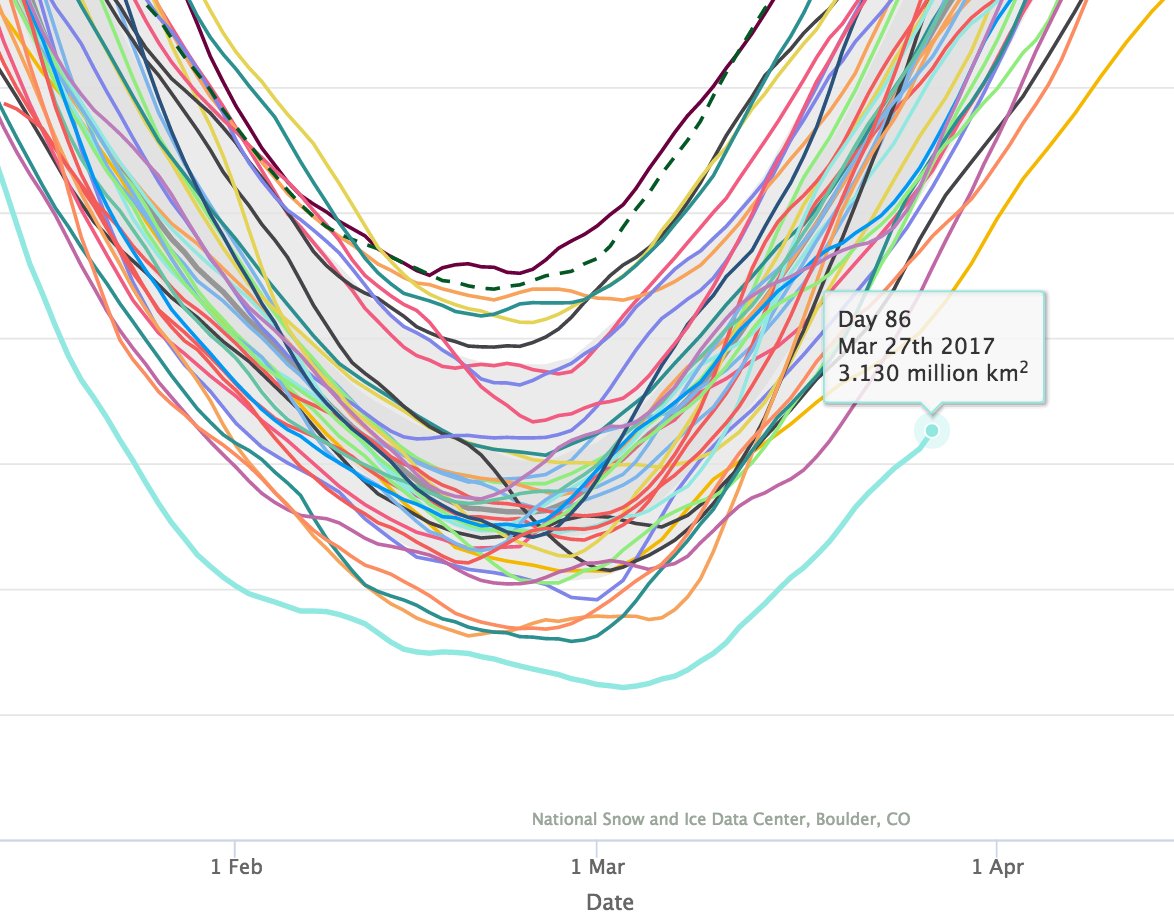
(1/) Something really remarkable is happening off the coast of #Peru and here's why you should care...: image
via Michael Lowry @MichaelRLowry, 27 March 2017
Antarctic sea ice extent has been at a record low each day for... nearly 5
months now: image via Bob Henson @bhensonweather, 28 March 2017
(2/) Ocean waters off the Peruvian coast spiked to record levels earlier this month...: image via Michael Lowry @MichaelRLowry, 27 March 2017
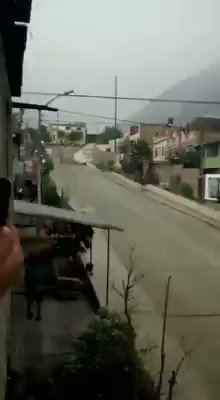
Michael Lowry Retweeted severe-weather.EU
Michael Lowry added,
(3/) The warmth triggered torrential rains in north Peru, w/ horrifying scenes of floods and mudslides downstream...
image via Michael Lowry @MichaelRLowry, 27 March 2017
image via Michael Lowry @MichaelRLowry, 27 March 2017
(6/) 1983 and 1998 both also brought catastrophic flooding to #Peru and look at the ocean warmth. Both were El Niño years...: image via Michael Lowry @MichaelRLowry, 27 March 2017
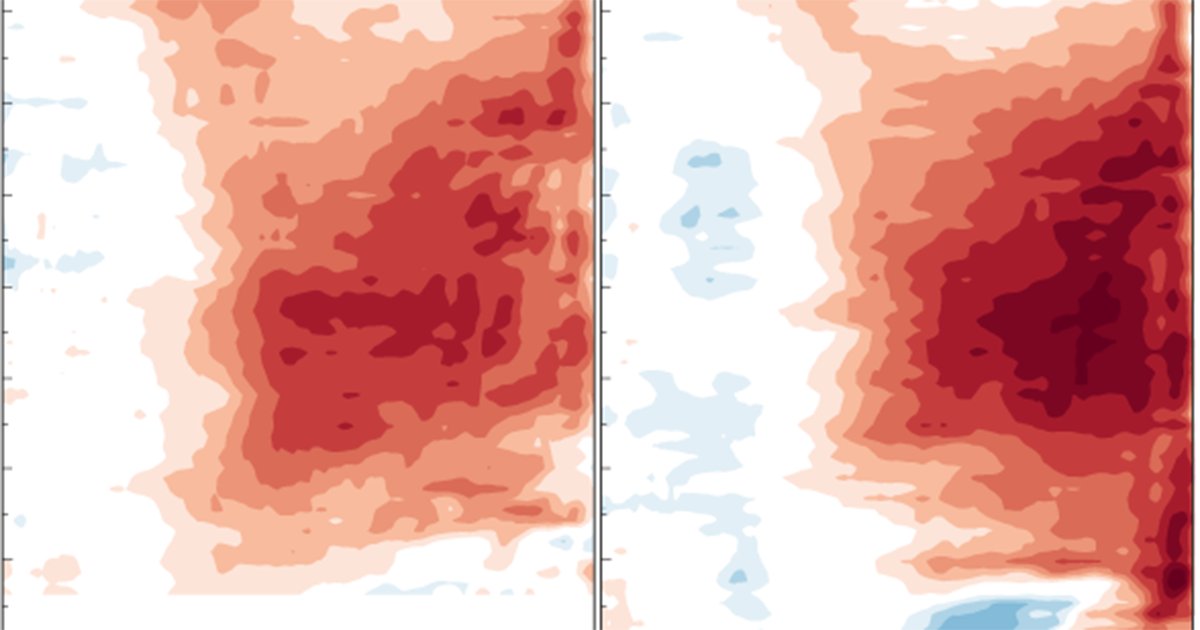
NOAA Climate.govVerified account @NOAAClimate
Michael Lowry Retweeted NOAA Climate.gov
Michael Lowry added,
(7/) But El Niño officially ended last summer. It's been either weak La Niña or neutral since. So what gives?
(8/) El Niño was first coined by Peruvian fishermen who noticed, in some
years, very warm waters around Christmas (El Niño - Christ child): tweet
via Michael Lowry @MichaelRLowry, 27 March 2017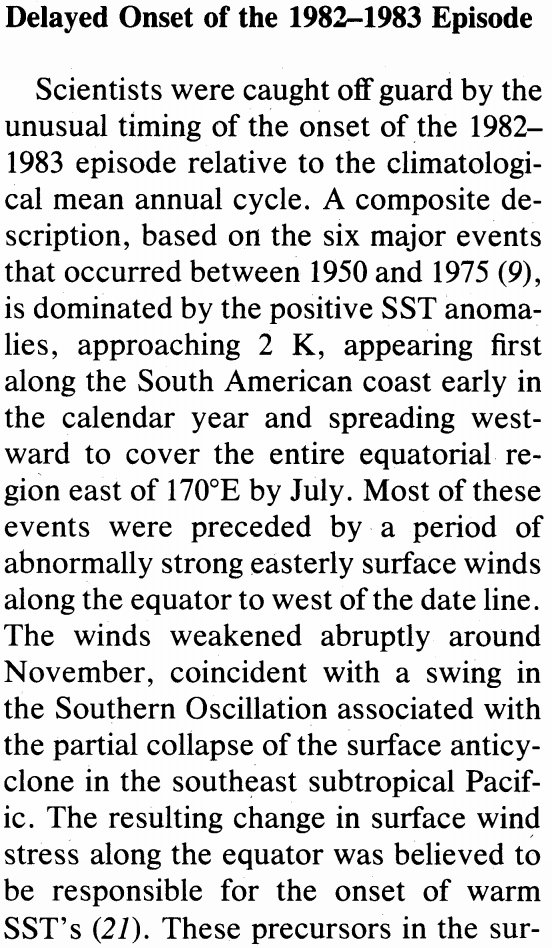
(9/) In fact, the original model for El Niño was warm waters form near #Peru and spread westward (http://www.sciencemag.org/sit
(10/)
That's since been updated with a west-to-east model -- that is, warm
waters move from the western to eastern Pacific via Kelvin waves: tweet image
via Michael Lowry @MichaelRLowry, 27 March 2017
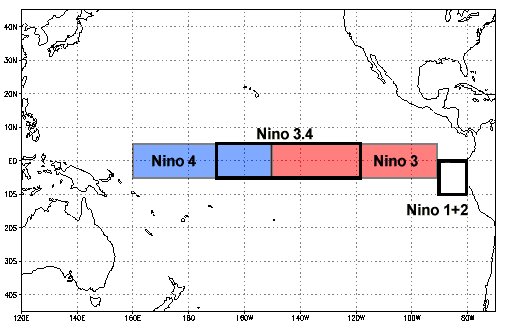
(11/) So @NOAA uses a bigger box west of Peruvian waters, the so-called Nino 3.4 region, to define El Niño (Image: @NOAA): image via Michael Lowry @MichaelRLowry, 27 March 2017
(12/) But to many, if not most, Peruvians, warmer than average coastal waters is still considered El Niño: tweet via Michael Lowry @MichaelRLowry, 27 March 2017
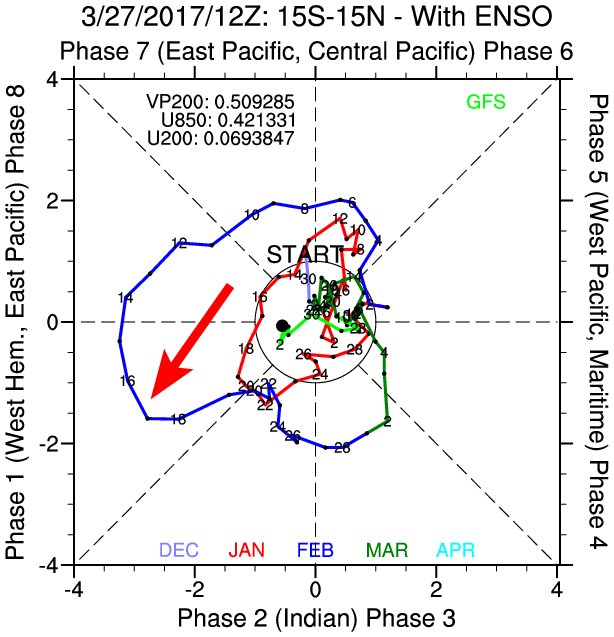
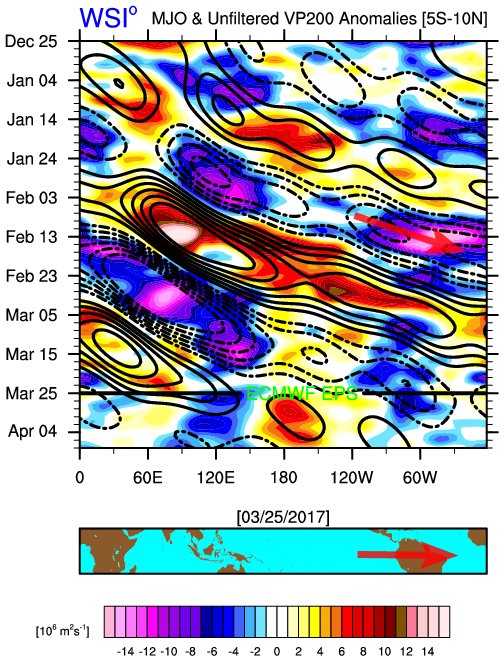
(13/) So what caused the most recent warm event? A big MJO event in mid-late Feb that shut down the easterly trades. (Plot via @MJVentrice): image via Michael Lowry @MichaelRLowry, 27 March 2017
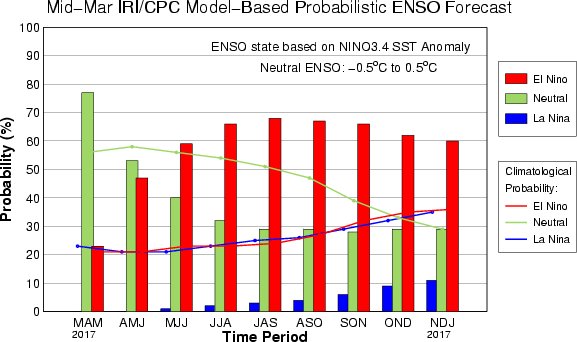
(14/) Forecasts call for increasing odds of an (official) El Niño this fall. Are the rains in #Peru a harbinger of things to come?: image via Michael Lowry @MichaelRLowry, 27 March 2017
(15/) *IF* this turns into a full blown El Niño, it would be the first time in a long time we've observed an east-west evolution. -fin- : tweet via Michael Lowry @MichaelRLowry, 27 March 2017


When the numbered tweets start (HD remaster): image by kobayashi badtz-maru @HapaxLegoman, 26 March 2017

When the numbered tweets start (HD remaster): image by kobayashi badtz-maru @HapaxLegoman, 26 March 2017
Lockdown
at Alien-Occupied Casa Blanca: Earth Future Consigned to Trash; Faux Polar Bear Now Chief Suspect; Orange Bozo Makes Getaway
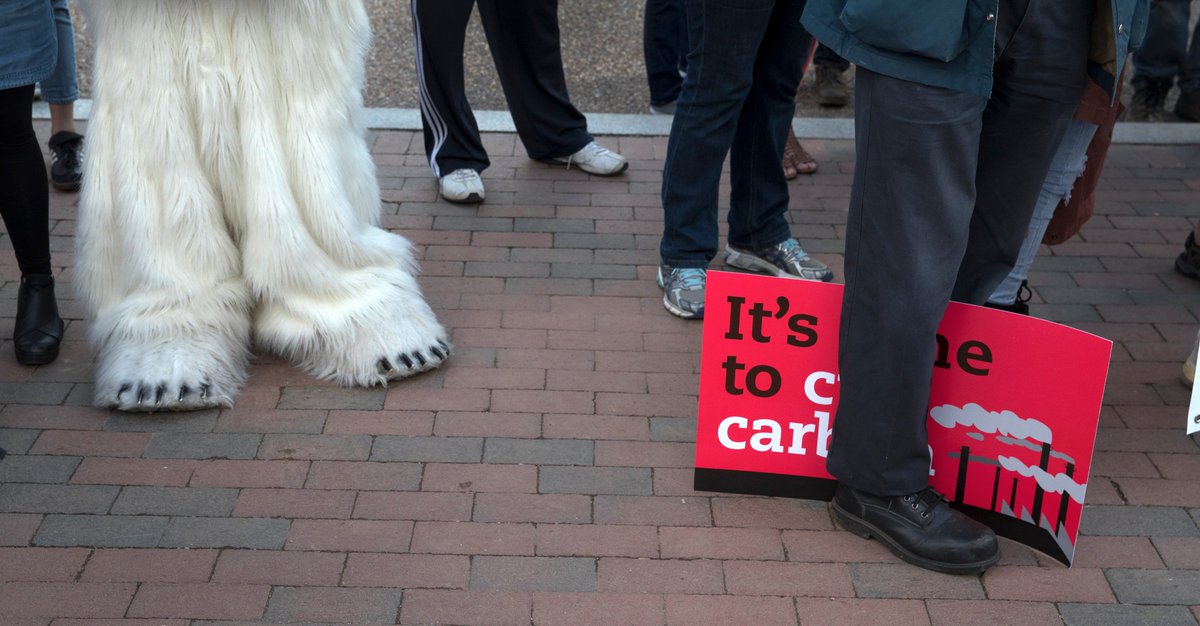
Demonstrators gathered in front of the White House to voice their opposition to President Donald Trump's EO re climate-change policies.: image via Stephen Crowley @Stcrow, 28 March 2017
USSS
is investigating suspicious package; security perimeter established and
members of the public and media are being moved to safe a distance: tweet via Stephen Crowley @Stcrow, 28 March 2017
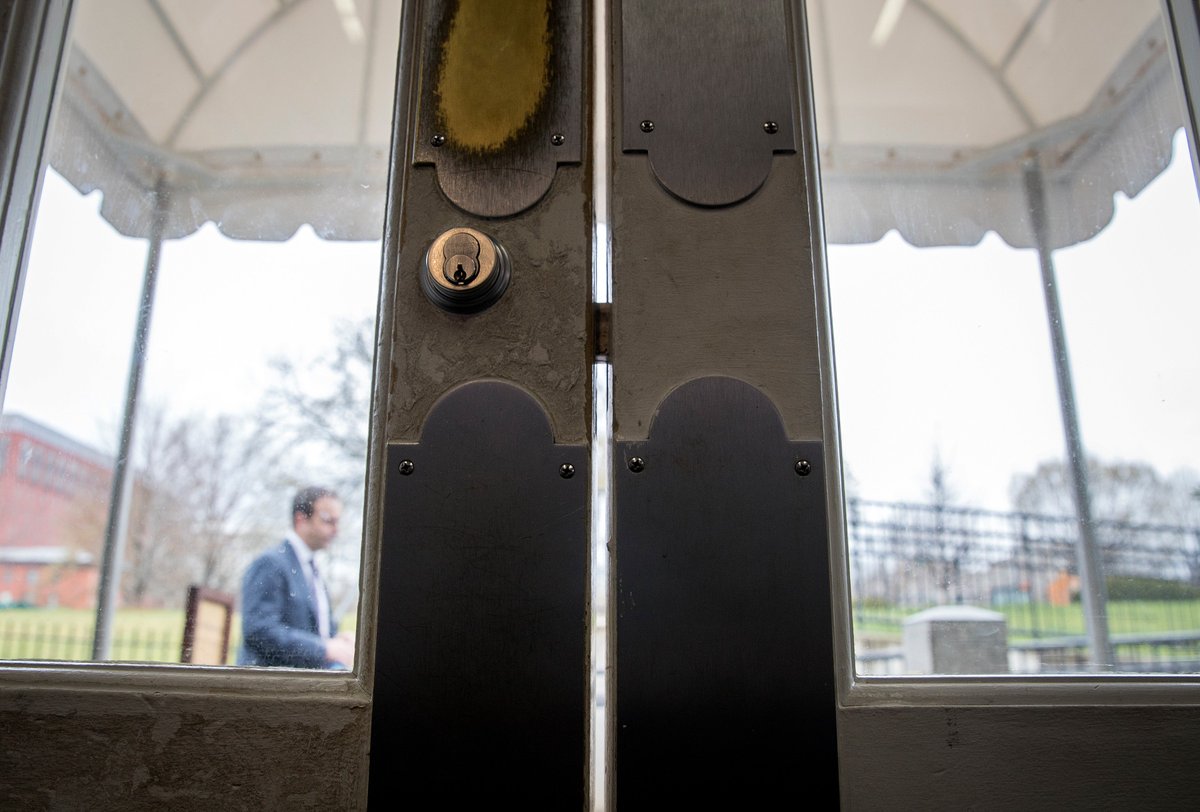
Re White House security incident: Male suspect w "suspicious package" approached Secret Service at 15th and Penn. In custody.: image via Stephen Crowley @Stcrow, 28 March 2017
Breaking: now revealed that Male suspect was carrying helium-inflated Dear John Letter from Mother Nature: tweet via Laffing Last @lastlaff, 28 March 2018
The Good Jane
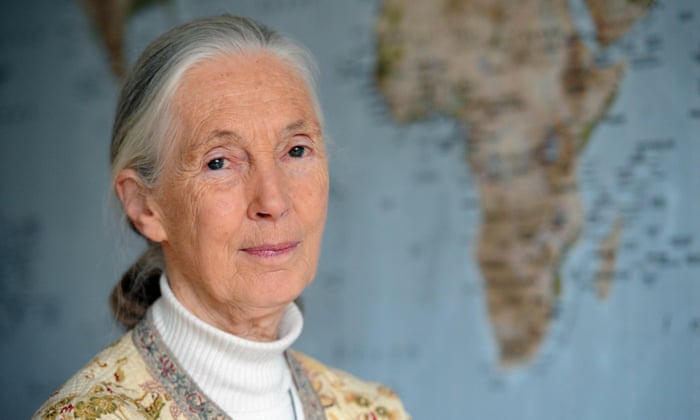
British scientist Jane Goodall: ‘ I have seen the result of climate change and we know, science has shown, that global temperatures are warming.’: photo by Bertrand Guay/AFP via the Guardian, 28 March 2017
Jane
Goodall calls Trump's climate change agenda 'immensely depressing': The
renowned primatologist is dismayed by Trump administration’s
climate skepticism, but says people have ‘woken up’ to the dangers of
doing nothing: David Smith in Washington, The Guardian, 28 March 2017
Leading conservationist Jane Goodall has condemned Donald Trump’s bid to rip up America’s climate change policies as “immensely depressing” and flying in the face of scientific evidence.
Leading conservationist Jane Goodall has condemned Donald Trump’s bid to rip up America’s climate change policies as “immensely depressing” and flying in the face of scientific evidence.
The US president signed an executive order on Tuesday aimed at dismantling Barack Obama’s clean power plan, intended to limit greenhouse gases from power plants, a move that calls US commitment to the Paris accord into question.
“I find it immensely depressing because many of us – not just my institute – have been working really hard to create the Paris agreement and global effort to cut carbon emissions,” Goodall told journalists ahead of a speech at American University in Washington. “Thinking that the USA isn’t going to play its part, such a major industrial country, is really very, very sad and it just means we’re going to have to work harder.”
The British primatologist, renowned for her work with chimpanzees, expressed dismay that Trump and others in his administration have questioned the scientific basis of climate change. “Because I’m traveling all over the world 300 days a year, I have seen the result of climate change and we know, science has shown, that global temperatures are warming and these so-called greenhouse gases are blanketing the globe,” she said, noting that ice is melting, sea levels [are] rising and oceans losing their ability to absorb their carbon dioxide.
“There’s no way we can say climate change isn’t happening: it’s happened. The argument that people give is, ‘Well, we can’t prove that human activities are the main cause of this,’ and I just heard the other day that one of the president’s people [Scott Pruitt of the Environmental Protection Agency] said, ‘Well, we don't think carbon dioxide is themain greenhouse gas.'"
Speaking with quiet, calm and piercing authority, Goodall continued:
“So being not a scientist in that field I tend to listen to scientists
who do work in that field, like Nicholas Stern, and I would not dream of
refuting the science that shows climate change is happening, it’s
happening everywhere, it’s already having devastating effects in many
parts of the word and the droughts are getting worse, flooding’s getting
worse, storms, hurricanes are getting more frequent and more violent.
And the main thing is unpredictability: everywhere I go people say well
it’s not normally like that at this time of year.”
Asked whether the global effort to combat these changes can survive
without the US, Goodall pointed to China and the United Arab Emirates as
major investors in green energy. “I think it depends a little bit on
how many coal mines the president is able to open up again ‘cos that is a
problem.”
In addition to the climate issue, the 82-year-old also has cause to
worry about Trump’s plans to slash funding to USAid, which could hurt
the Jane Goodall Institute, a wildlife and environment conservation
organisation she founded in 1977. Working in six African countries, its
projects include community-based conservation, girls’ education, family
planning and forest protection and restoration.
Goodall is a regular visitor to the US but this is her first trip
since Trump’s staggering election win last November. “It does feel
different,” she acknowledged. “There is definitely a feeling of gloom
and doom among all the people I know. If we allow this feeling of doom
and gloom to continue then it will be very, very bad, but my job is to
give people hope and I think one of the main hopes is the fact that
people have woken up: people who were apathetic before or didn’t seem to
care.
“Now suddenly it’s like they’ve heard a trumpet call: ‘What can we
do? We have to do something.’ These are people thinking about future
generations, not just themselves.”
The Guardian asked Goodall what she thinks about Trump. “I’m not
going to tell you because you’ll print it,” she replied, with a laugh.
Meanwhile, nearly 30 years after Gorillas in the Mist, a film
starring Sigourney Weaver as primatologist Dian Fossey, Goodall is
finally going to receive the Hollywood treatment too. The movie will be
produced by actor and environmentalist Leonardo DiCaprio’s company but
Goodall does not have a view on which actor should play her. “It’s
creepy to me,” she mused. “Two Janes out there."
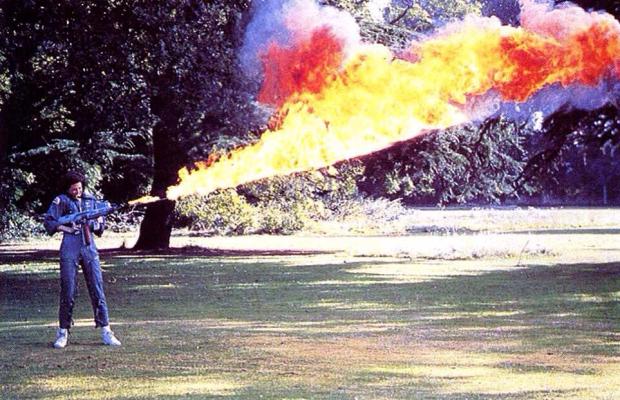
California
Gov. Jerry Brown warned that President Trump has just made a “colossal
mistake” in gutting the federal government’s effort to combat climate
change, which will ignite a response Trump is unprepared to handle.
“It defies science itself,” Brown said in a call to The Times shortly after Trump signed an executive order that aims to bring an abrupt halt to the United States' leadership on global warming. “Erasing climate change may take place in Donald Trump‘s mind, but nowhere else.”
“Yes, there is going to be a counter-movement,” Brown vowed, predicting Trump’s actions will mobilize environmentalists in a way President Obama never could. “I have met with many heads of state, ambassadors. This is a growing movement. President Trump’s outrageous move will galvanize the contrary force. Things have been a bit tepid [in climate activism]. But this conflict, this sharpening of the contradiction, will energize those who believe climate change is an existential threat.”
Brown and other big-state governors and mayors are moving swiftly to fill the global leadership vacuum Trump created with Tuesday’s directive, which stops short of officially pulling the U.S. out of the Paris climate accord of 2015.
“I see Washington declining in influence, but the momentum being maintained by California and other states aligned with China and those who are willing to do something,” said Brown, who will be traveling to China soon for meetings on climate. “There is a growing activism on the part of millions of people who will not stand by and let Donald Trump effectively tear up the Paris agreement and destroy America’s climate leadership and jeopardize the health and well being of so many people.”
In the face of Trump’s retreat on climate, Brown said California will step up its own efforts to push others toward clean energy. “We are not fully meeting the challenge of climate change yet,” he said. “We are doubling down on our commitment. We are reaching out to other states in America and throughout the world and other countries …. We have plenty of fuel to build this movement.”
“This is real," Brown said of the threat created by climate change. "The nations of the world have recognized it in Paris … I will continue doing my best to work with and rouse the world community, whatever the politicians in Washington do or don’t do.”
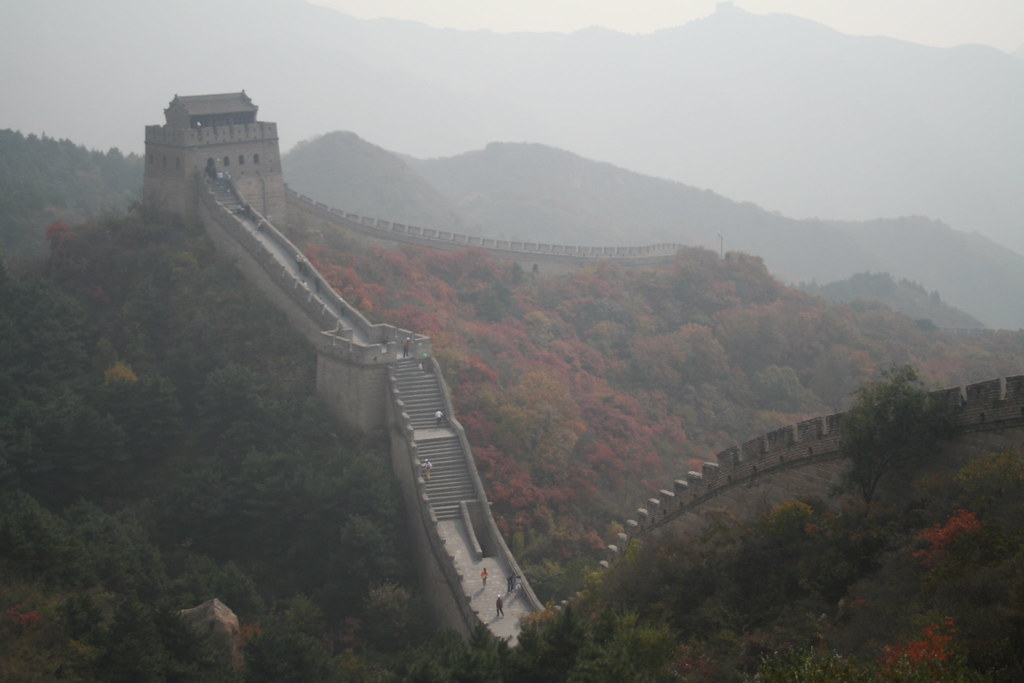
Great Wall cloaked in smog, Beijing: photo by Vicky, 10 October 2005
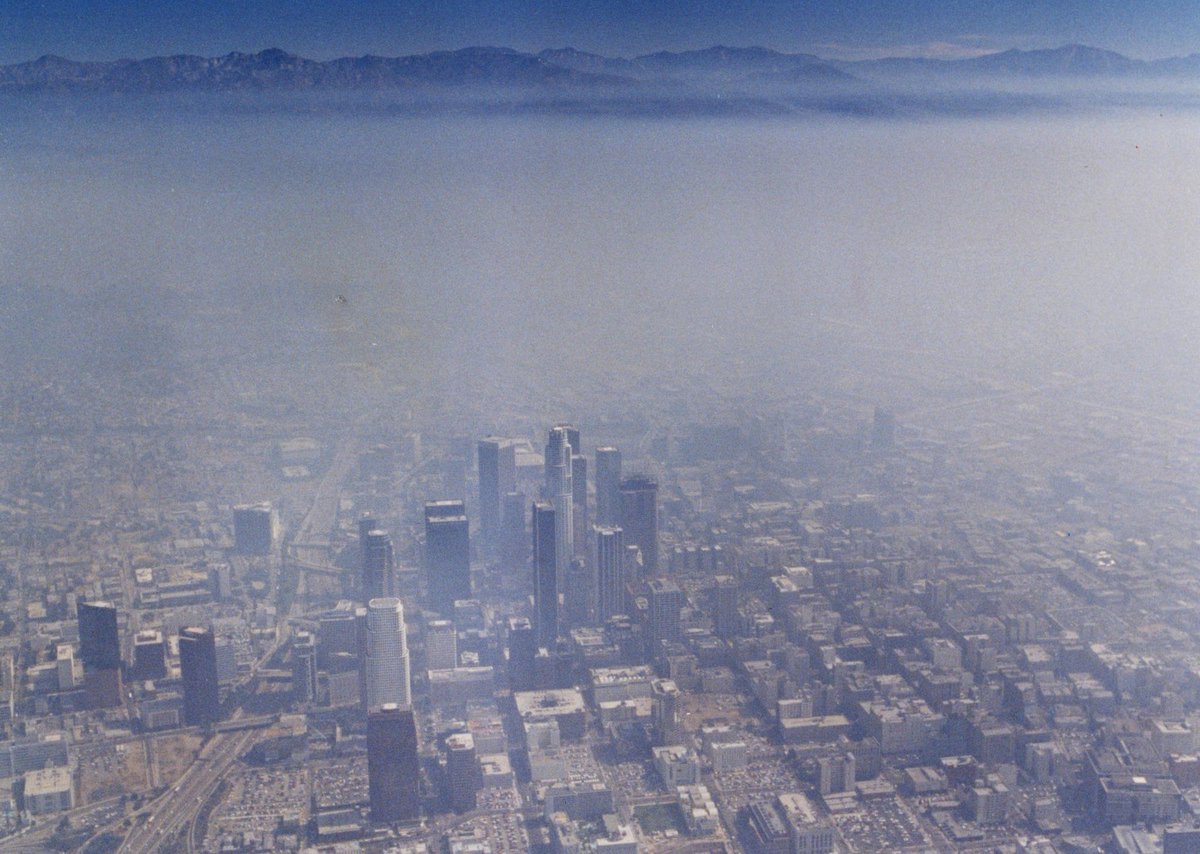
This was our air in 1990. State legislators are ready to go to war with Trump to stop this from happening again: image via Los Angeles Times, @latimes, 25 March 2017
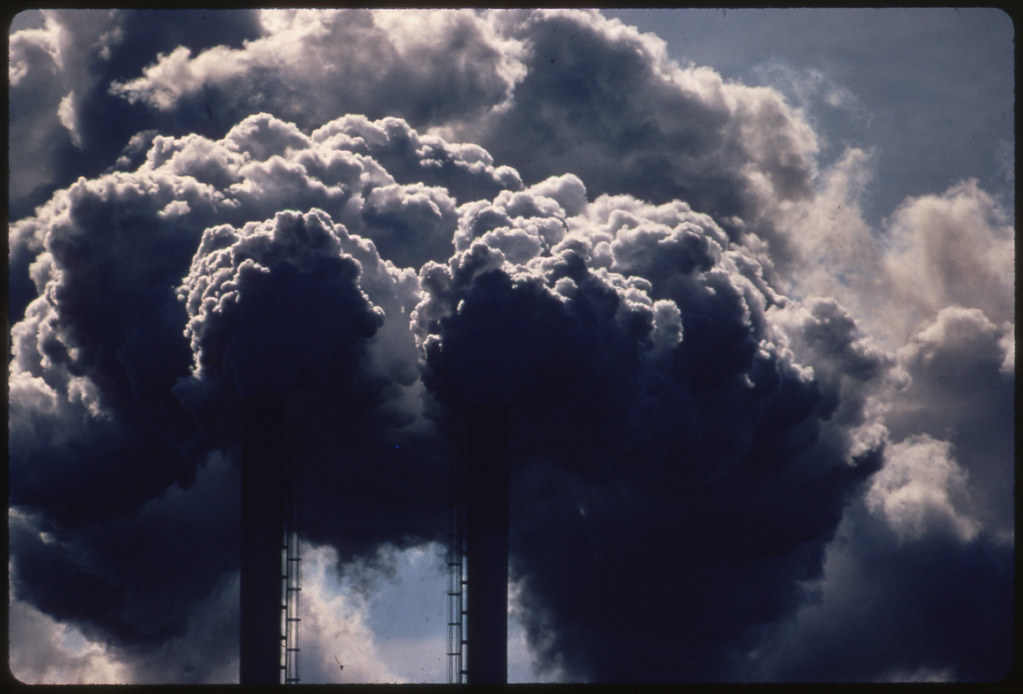
Burning discarded automobile batteries, Houston, Texas: photo by Marc St. Gil for the US Environmental Protection Agency, July 1973
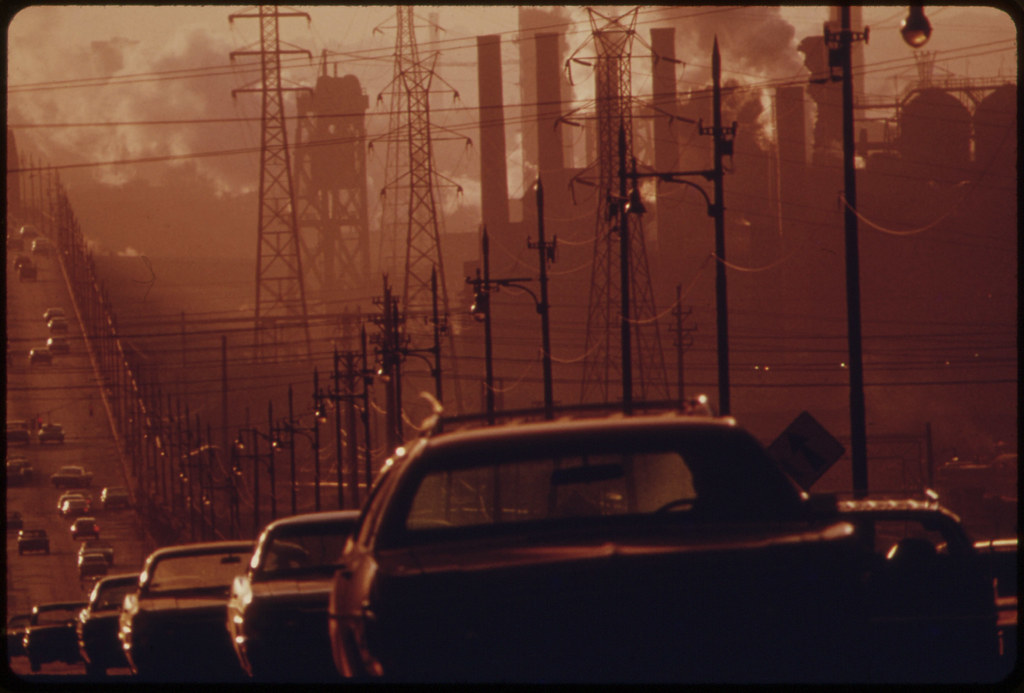
Clark Avenue and Clark Avenue Bridge, looking East from West 13th Street, are obscured by smoke from heavy industry, Cleveland, Ohio: photo by Frank J. Aleksandrowicz for the US Environmental Protection Agency, July 1973

The George Washington Bridge, New York City, in heavy smog. View toward the New Jersey side of the Hudson River: photo by Chester Higgins for the US Environmental Protection Agency, August 1973
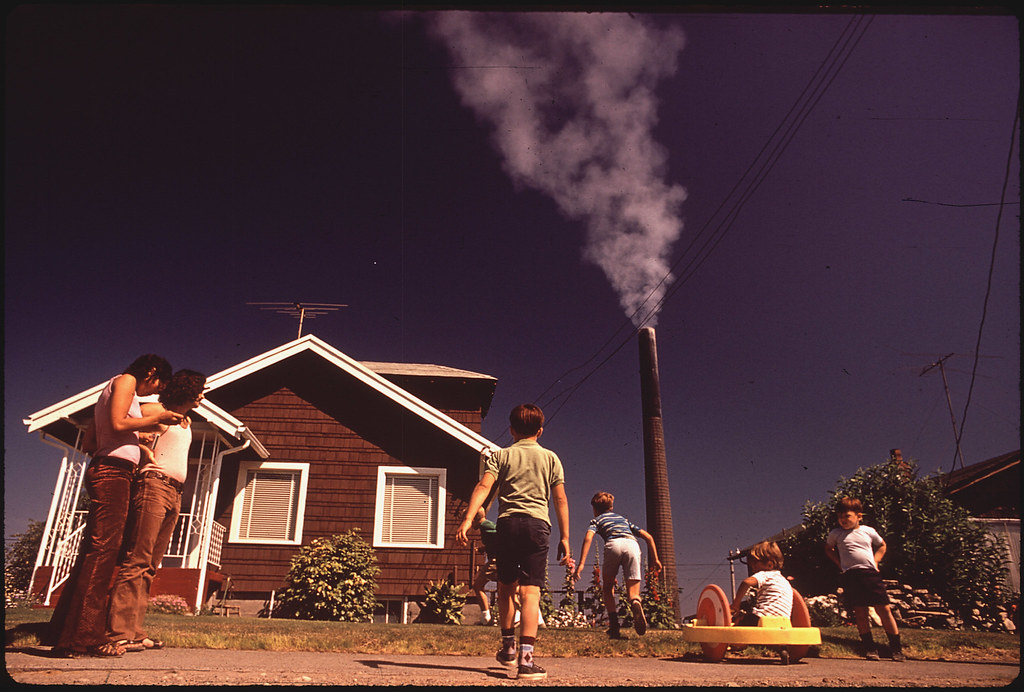
Children play in yard of Ruston, Washington home, while Tacoma Smelter stack showers area with arsenic and lead residue: photo by Gene Daniels for the US Environmental Protection Agency, August 1972
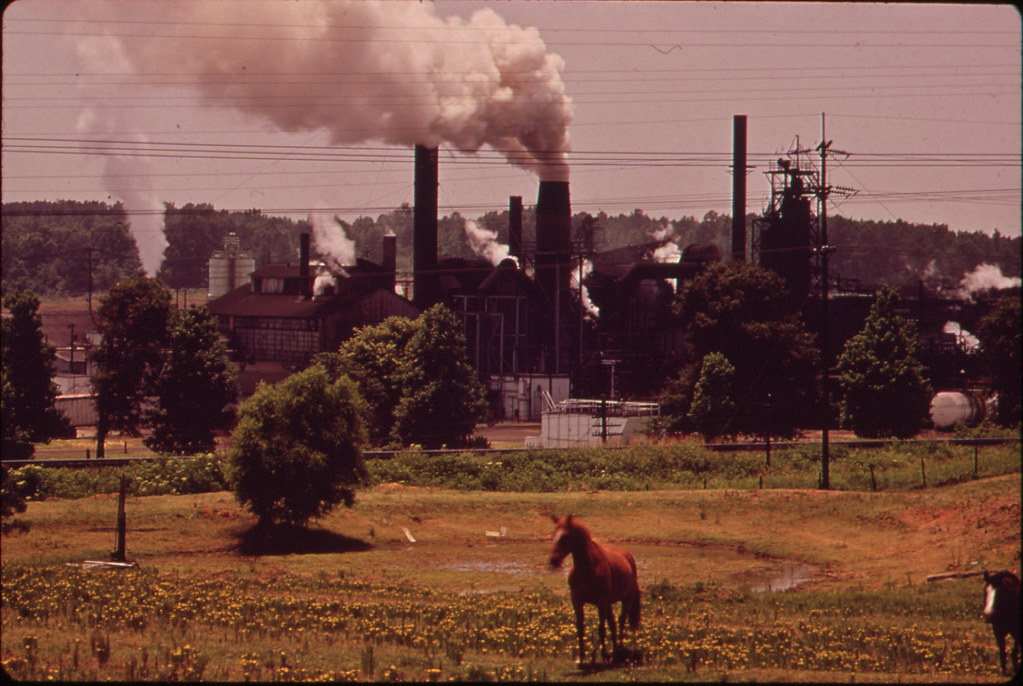
The Atlas Chemical Company belches smoke across pasture land in foreground, Marshall, Texas. The plant Is referred to as "Old Darky" in the community because black soot from the plant covers everything near-by. One farmer claims he lost several cows due to soot and chemicals from Atlas: photo by Marc St. Gil for the US Environmental Protection Agency, June 1972
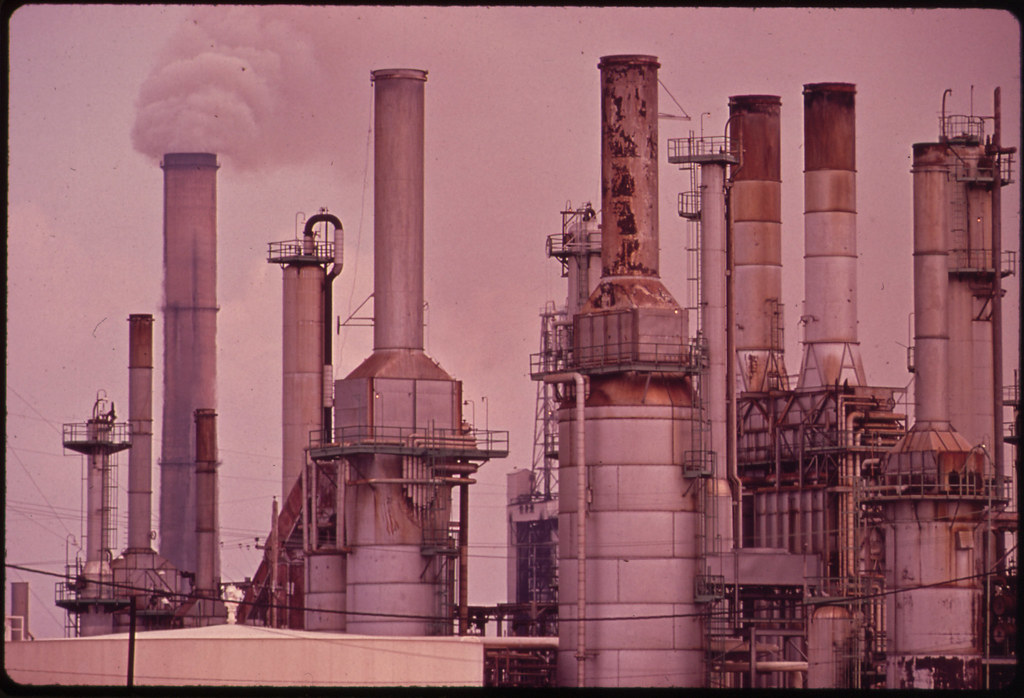
Smokestacks of chemical plant, Corpus Christi, Texas: photo by Marc St. Gil for the US Environmental Protection Agency, November 1972
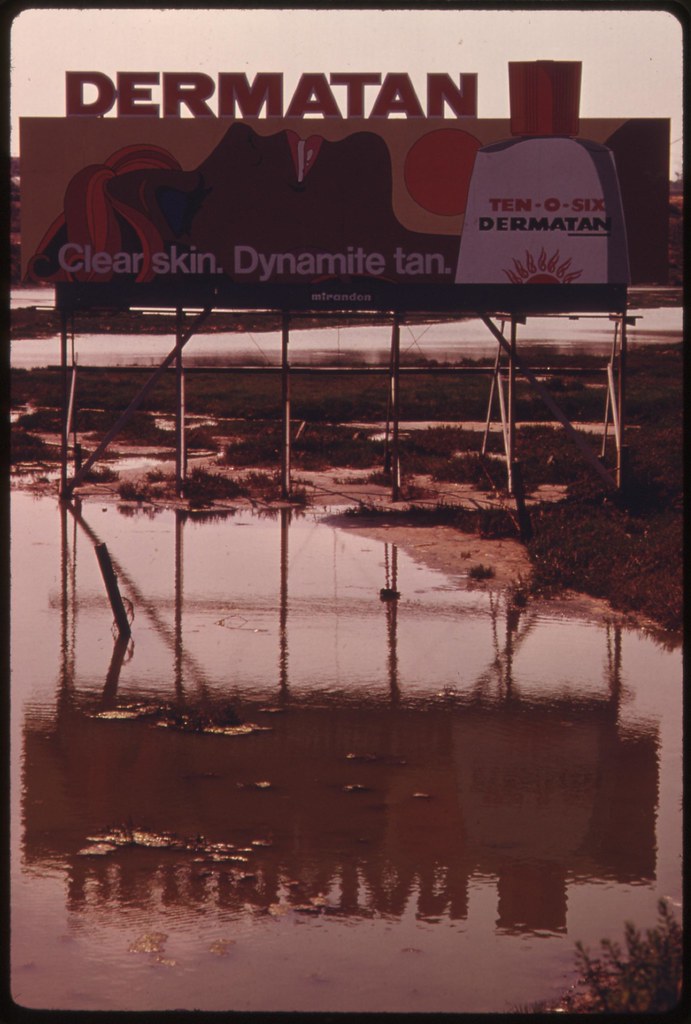
Botaquito Lagoon, Carlsbad, California ,is one of the last few bodies of water of this type in the southern part of the state. It suffers from nearby freeways and developments as well as farm erosion and septic tank seepage. Some 84 percent of the state's residents live within 30 miles of the coast, and it has resulted in increased land use pressures. Coastal wetlands totaled about 125,000 acres in the early 1970's compared to some 381,000 acres in 1900: photo by Charles O'Rear for the US Environmental Protection Agency, June 1975

No dumping sign is a symptom of the population pressures along the coast of California off Mulholland Drive on the western edge of Los Angeles. The road winds through the Santa Monica Mountains which contain the last semi-wilderness in Los Angeles County and are being threatened by development. Some 84 percent of the state's residents live within 30 miles of the coast, and this concentration has resulted in increasing land use pressure.: photo by Charles O'Rear for the US Environmental Protection Agency, May 1975
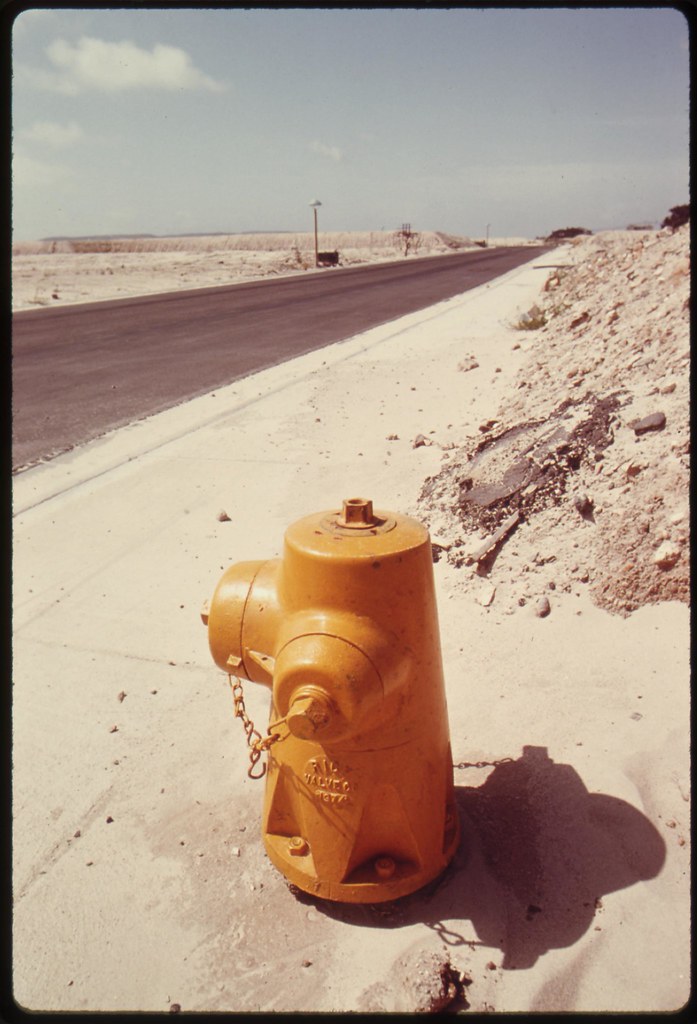
Unfinished streets and utilities contrast with completed development (not shown) at Laguna Niguel. Work here was halted and other developments were restricted following state passage of the Coastal Zone Conservation Act in November, 1972. State and regional regulatory commissions must present a final report to the legislature by January, 1976, recommending passage of laws affecting future coastal development.: photo by Charles O'Rear for the US Environmental Protection Agency, May 1975
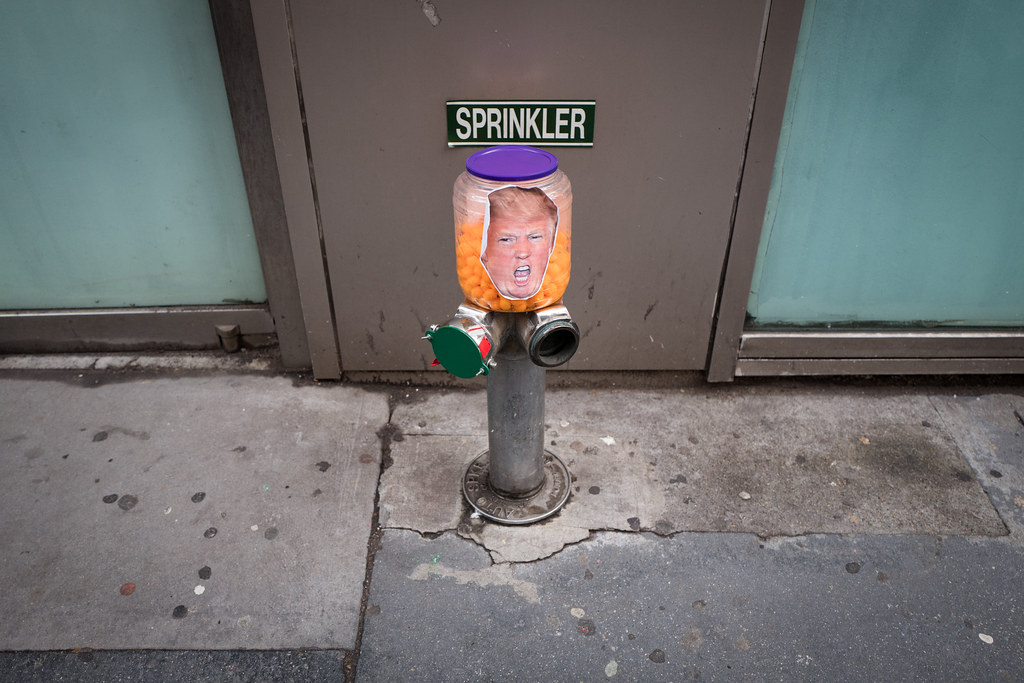
Sprinkler in chief [Women's March, Manhattan]: photo by Chris Farling, 22 January 2017
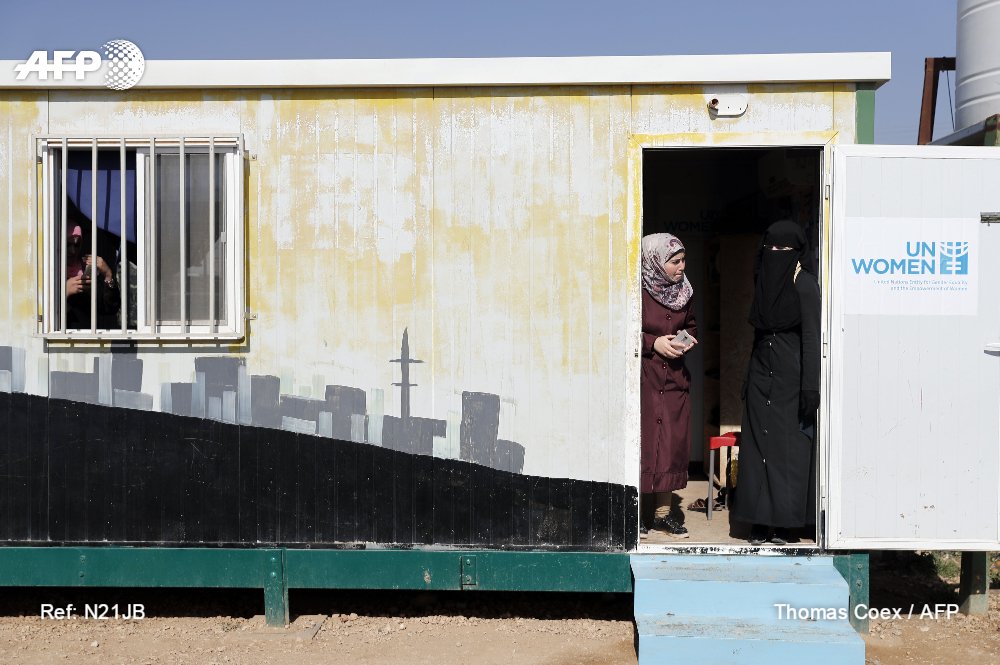
The Zaatari camp which shelters some 80,000 Syrian #Refugees on the Jordanian border with war-ravaged Syria. #AFP Photo @TomCoex: image via Aurelia Bailly @Aurelia Bailly, 28 March 2017
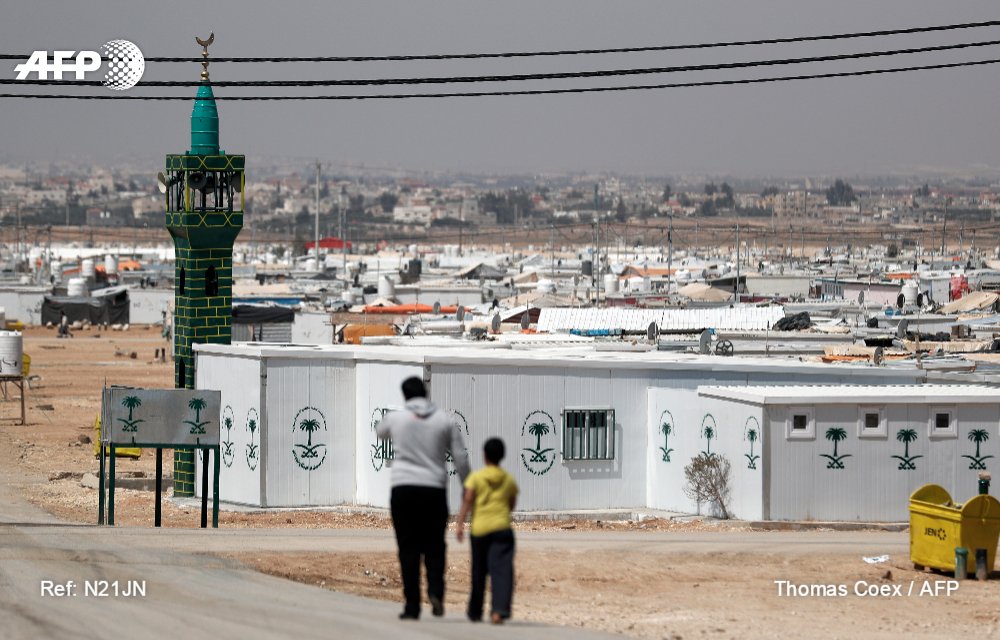
The Zaatari camp which shelters some 80,000 Syrian #Refugees on the Jordanian border with war-ravaged Syria. #AFP Photo @TomCoex: image via Aurelia Bailly @Aurelia Bailly, 28 March 2017
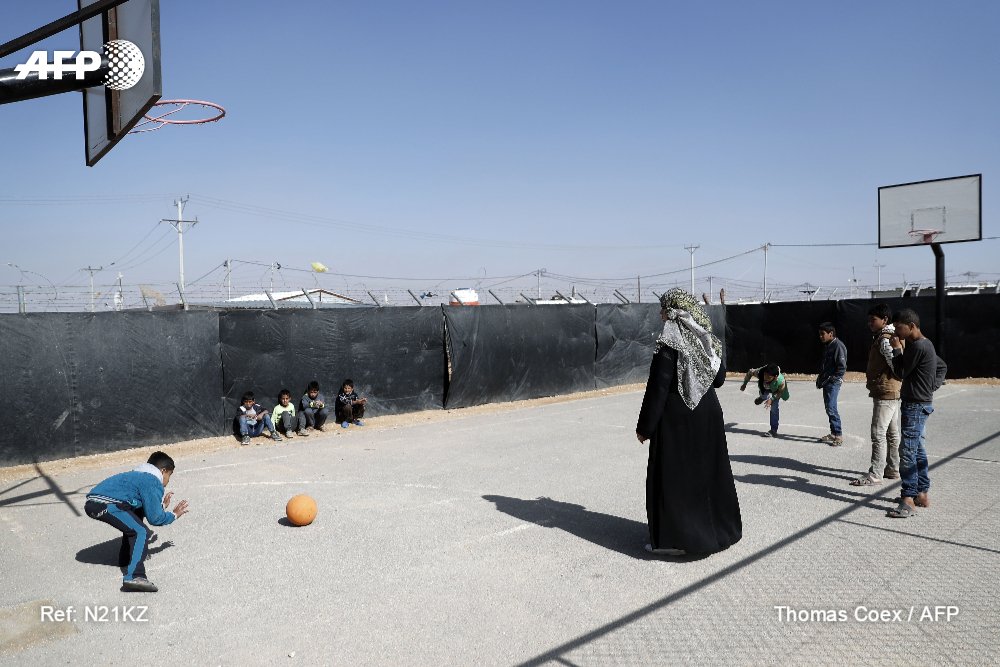
The Zaatari camp which shelters some 80,000 Syrian #Refugees on the Jordanian border with war-ravaged Syria. #AFP Photo @TomCoex: image via Aurelia Bailly @Aurelia Bailly, 28 March 2017

The Zaatari camp which shelters some 80,000 Syrian #Refugees on the Jordanian border with war-ravaged Syria. #AFP Photo @TomCoex: image via Aurelia Bailly @Aurelia Bailly, 28 March 2017



The body of Rayees Ahmad, a suspected rebel commander, is covered with the Pakistani flag during his funeral south of Srinagar, India.: image via AP Images @AP_Images, 27 March 2017









Iranian fans wait for the start of Iran and China's World Cup qualifying soccer match at the Azadi Stadium in Tehran, Iran, Tuesday, March 28, 2017. Portraits of the late Iranian revolutionary founder Ayatollah Khomeini, left, and Supreme Leader Ayatollah Ali Khamenei placed at center. Iran won the match 1-0.: photo by AP, 28 March 2017

Sigourney Weaver testing out a flamethrower for Alien (1979) dir. Ridley Scott: image via The Cinegogue @TheCinegogue, 25 March 2017
Double Down Brown calls Dirty Don Drumpfster energy plan a 'colossal mistake'
Gov. Jerry Brown: photo by Gregory Bull/AP, 28 March 2017
Gov. Jerry Brown calls Trump energy plan a 'colossal mistake' that will galvanize climate activists: Evan Halper, Los Angeles Times, 28 March 2017
“It defies science itself,” Brown said in a call to The Times shortly after Trump signed an executive order that aims to bring an abrupt halt to the United States' leadership on global warming. “Erasing climate change may take place in Donald Trump‘s mind, but nowhere else.”
“Yes, there is going to be a counter-movement,” Brown vowed, predicting Trump’s actions will mobilize environmentalists in a way President Obama never could. “I have met with many heads of state, ambassadors. This is a growing movement. President Trump’s outrageous move will galvanize the contrary force. Things have been a bit tepid [in climate activism]. But this conflict, this sharpening of the contradiction, will energize those who believe climate change is an existential threat.”
Brown and other big-state governors and mayors are moving swiftly to fill the global leadership vacuum Trump created with Tuesday’s directive, which stops short of officially pulling the U.S. out of the Paris climate accord of 2015.
“I see Washington declining in influence, but the momentum being maintained by California and other states aligned with China and those who are willing to do something,” said Brown, who will be traveling to China soon for meetings on climate. “There is a growing activism on the part of millions of people who will not stand by and let Donald Trump effectively tear up the Paris agreement and destroy America’s climate leadership and jeopardize the health and well being of so many people.”
In the face of Trump’s retreat on climate, Brown said California will step up its own efforts to push others toward clean energy. “We are not fully meeting the challenge of climate change yet,” he said. “We are doubling down on our commitment. We are reaching out to other states in America and throughout the world and other countries …. We have plenty of fuel to build this movement.”
“This is real," Brown said of the threat created by climate change. "The nations of the world have recognized it in Paris … I will continue doing my best to work with and rouse the world community, whatever the politicians in Washington do or don’t do.”
Thanks for Sharing the Aerosols

Great Wall cloaked in smog, Beijing: photo by Vicky, 10 October 2005
Atmospheric aerosols affect
weather and global general circulation by modifying cloud and
precipitation processes, but the
magnitude of cloud adjustment by aerosols
remains poorly quantified and represents the largest uncertainty in
estimated forcing
of climate change. Here we assess the
effects of anthropogenic aerosols on the Pacific storm track, using a
multiscale global
aerosol–climate model (GCM). Simulations
of two aerosol scenarios corresponding to the present day and
preindustrial conditions
reveal long-range transport of
anthropogenic aerosols across the north Pacific and large resulting
changes in the aerosol
optical depth, cloud droplet number
concentration, and cloud and ice water paths. Shortwave and longwave
cloud radiative forcing
at the top of atmosphere are changed by
−2.5 and +1.3 W m−2, respectively, by emission changes from
preindustrial to present day, and an increased cloud top height
indicates invigorated
midlatitude cyclones. The overall
increased precipitation and poleward heat transport reflect
intensification of the Pacific
storm track by anthropogenic aerosols.
Hence, this work provides, for the first time to the authors’ knowledge,
a global perspective
of the effects of Asian pollution outflows
from GCMs. Furthermore, our results suggest that the multiscale
modeling framework
is essential in producing the aerosol
invigoration effect of deep convective clouds on a global scale.
Yuan Wang, Minghuai
Wang, Renyi Zhang, Steven J. Ghan, Yun Lin, Jiaxi Hu, Bowen Pan, Misti
Levy, Jonathan H. Jiang, Mario J. Molina: Assessing the effects of anthropogenic aerosols on Pacific storm track using a multiscale global climate model, abstract of a paper in Proceedings of the National Academy of Science, 14 April 2014

Great Wall cloaked in smog, Beijing: photo by Vicky, 10 October 2005
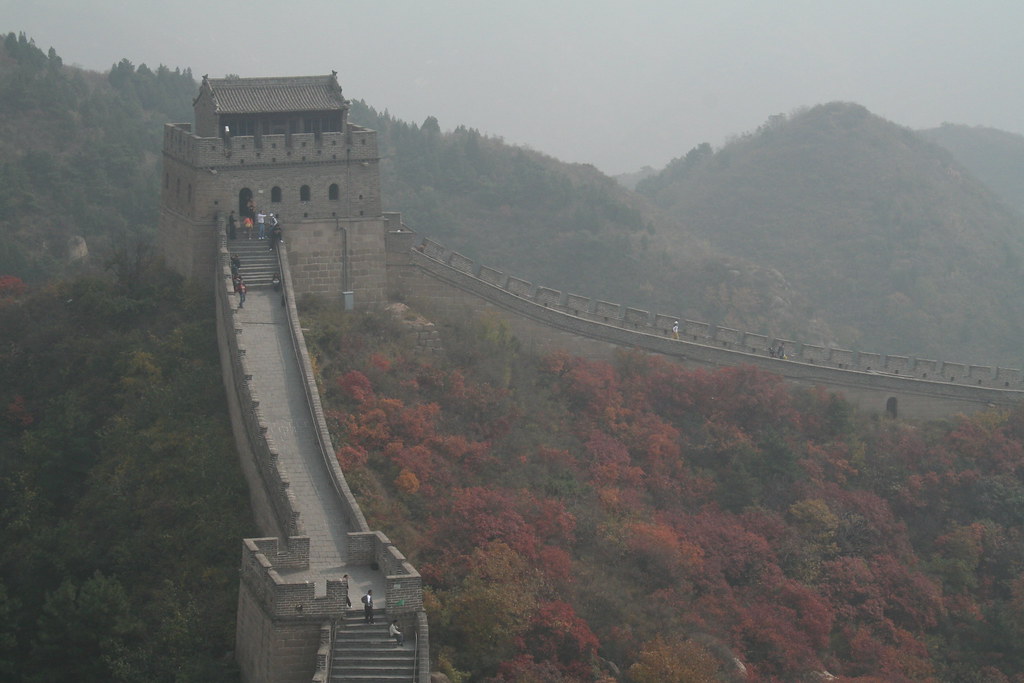
Great Wall cloaked in smog, Beijing: photo by Vicky, 10 October 2005

The Jinshanling Great Walls in Chengde, north of Beijing: photo by ChinaFotoPress, 25 February 2014
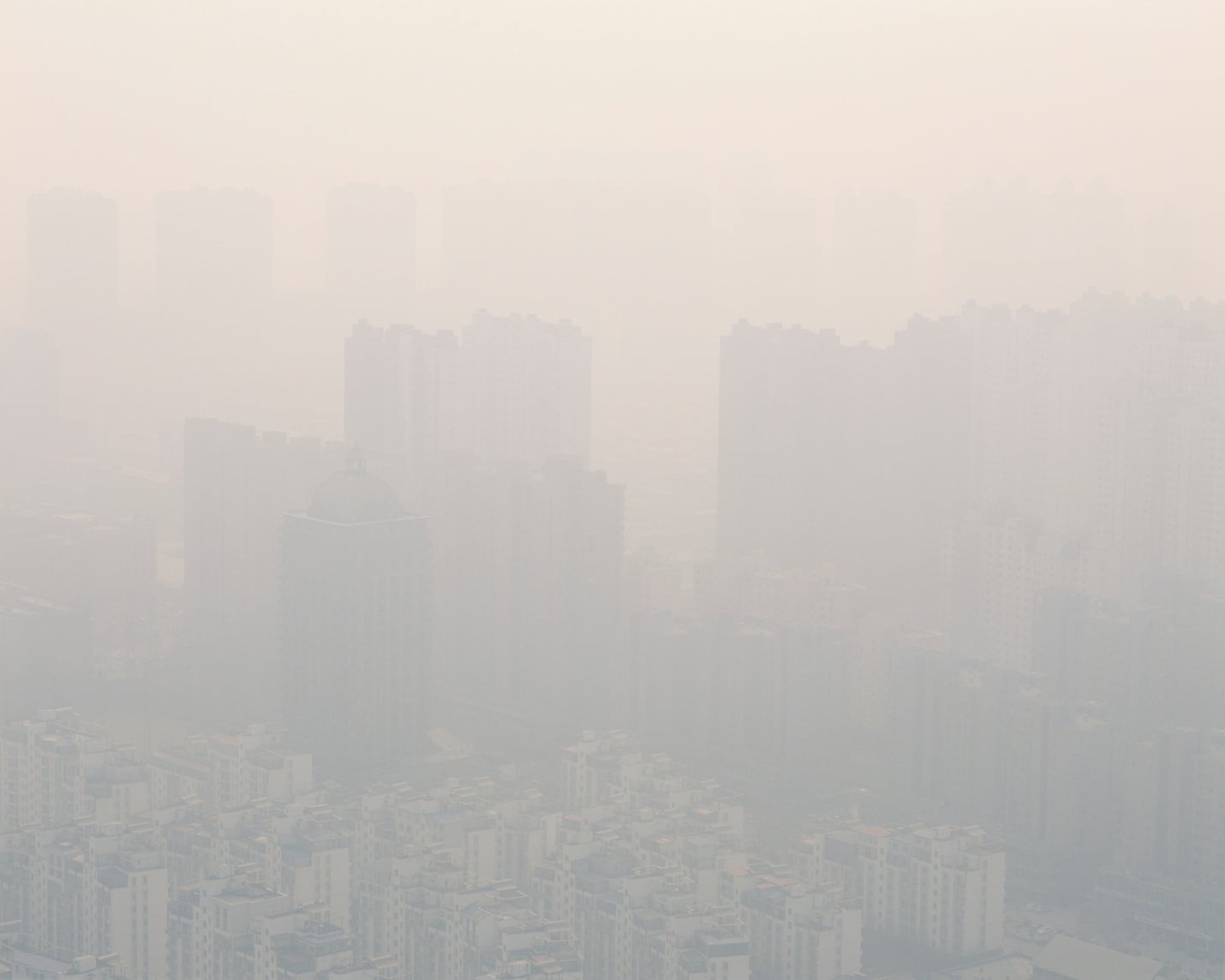
Shijiazhuang, AQI 360, China 2014. This panoramic shot shows a city barely visible through thick fog. Only the title -– AQI 360 –- suggests there is something sinister here. AQI stands for ‘Air Quality Index’. The index runs from 1-500, where 0-50 is ‘good’ and 301-500 indicates a hazardous level of pollution. AQI 301-500 can aggravate heart or lung disease, lead to premature mortality in the elderly and cause serious respiratory problems in the general population: photo by Benedikt Partenheimer via The Guardian 18 November 2014

China World Trade Centre Tower III (C), one of the tallest buildings in the city at 330m (1083ft), in the heavy haze in Beijing. Beijing and broad swaths of six northern provinces have spent the past week blanketed in a dense pea-soup smog that is not expected to abate until Thursday. Beijing’s concentration of PM 2.5 particles –- those small enough to penetrate deep into the lungs and enter the bloodstream –- hit 505 micrograms per cubic metre on Tuesday night. The World Health Organisation recommends a safe level of 25 : photo by Jason Lee / Reuters, 25 February 2014
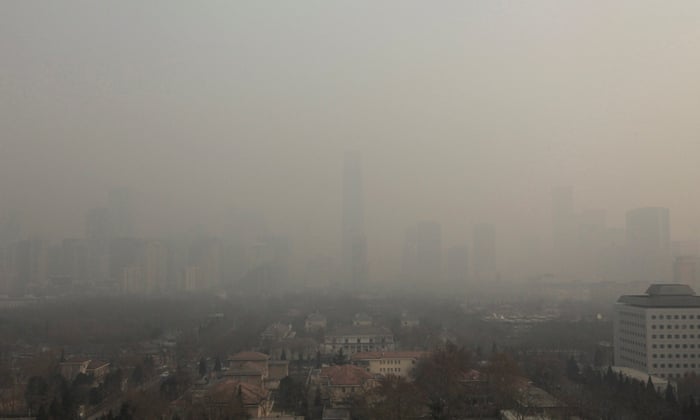
China World Trade Centre Tower III (C), one of the tallest buildings in the city at 330m (1083ft), in the heavy haze in Beijing: photo by Jason Lee / Reuters, 25 February 2014
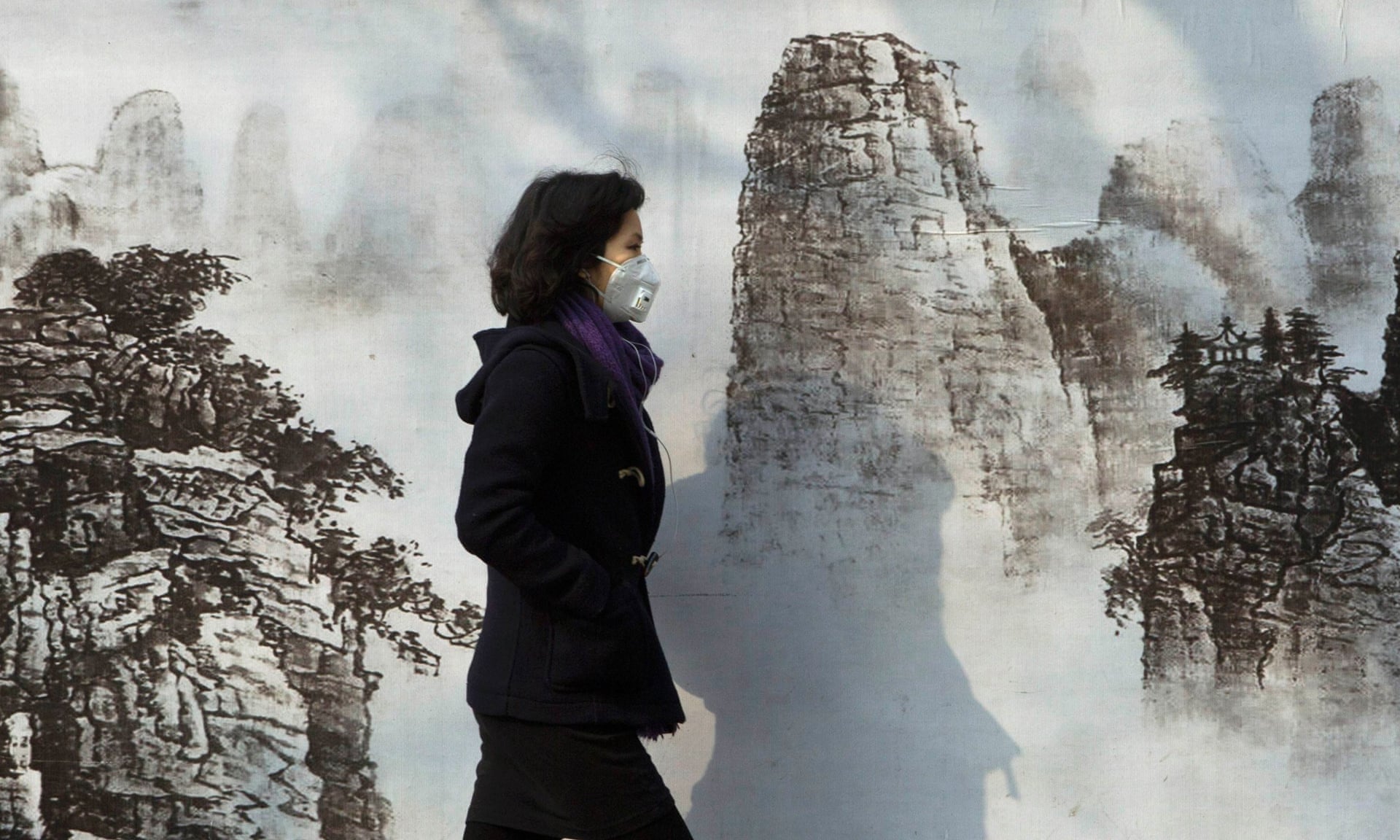
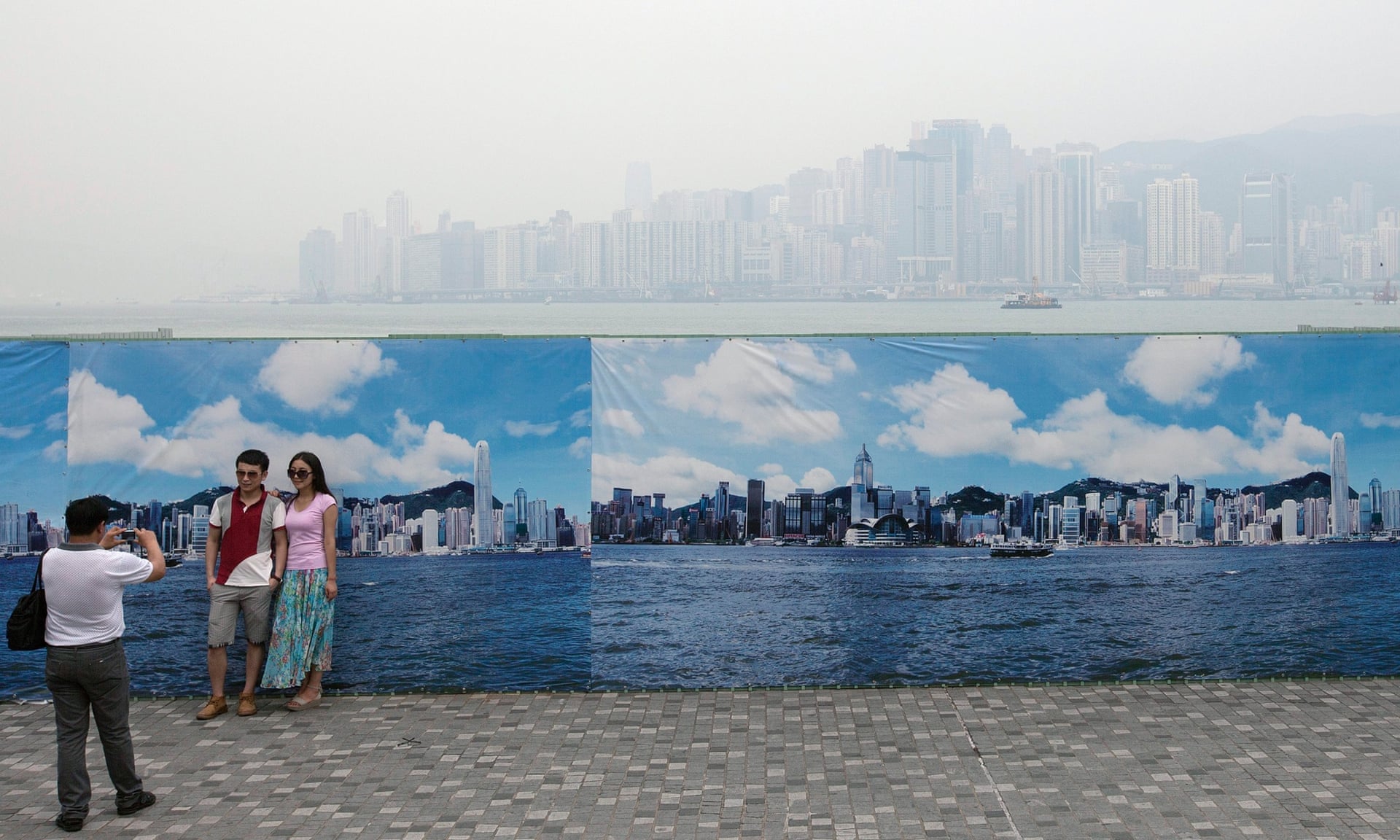
Tourists from mainland China take photos in front of a large outdoor banner in in Hong Kong showing what the city looks like on a clean-air day: photo by Alex Hofford / EPA, 25 February 2014
 .
.
Tourists from mainland China take photos in front of a large outdoor banner in in Hong Kong showing what the city looks like on a clean-air day: photo by Alex Hofford / EPA, 25 February 2014
Behind the screen
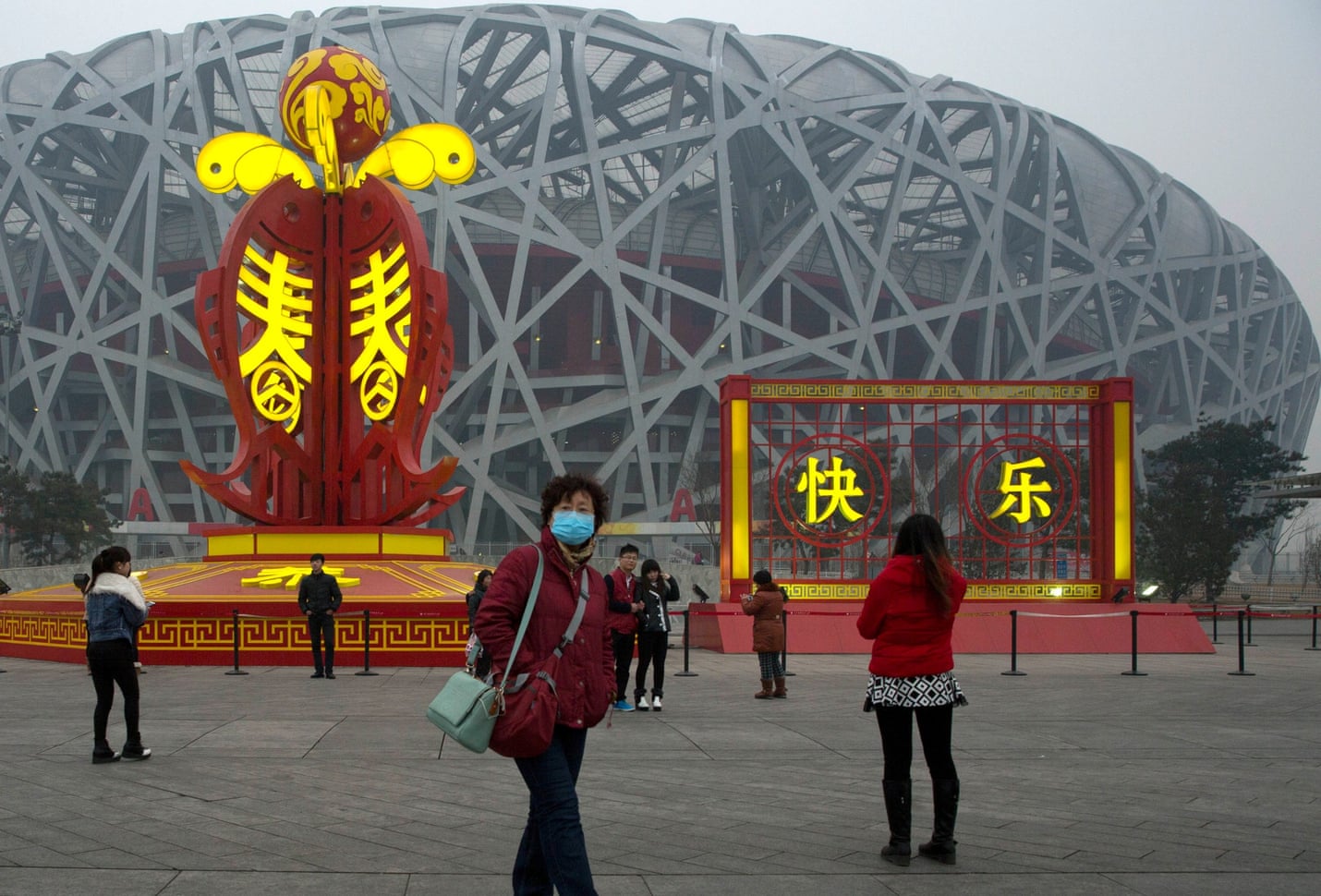
A woman wears a mask as she walks by the National Stadium on a hazy day in Beijing: photo by Ng Han Guan /AP via The Guardian, 25 February 2014

A woman wears a mask as she walks by the National Stadium on a hazy day in Beijing: photo by Ng Han Guan /AP via The Guardian, 25 February 2014


Great Wall cloaked in smog, Beijing: photo by Vicky, 10 October 2005

Great Wall cloaked in smog, Beijing: photo by Vicky, 10 October 2005

The Jinshanling Great Walls in Chengde, north of Beijing: photo by ChinaFotoPress, 25 February 2014

Shijiazhuang, AQI 360, China 2014. This panoramic shot shows a city barely visible through thick fog. Only the title -– AQI 360 –- suggests there is something sinister here. AQI stands for ‘Air Quality Index’. The index runs from 1-500, where 0-50 is ‘good’ and 301-500 indicates a hazardous level of pollution. AQI 301-500 can aggravate heart or lung disease, lead to premature mortality in the elderly and cause serious respiratory problems in the general population: photo by Benedikt Partenheimer via The Guardian 18 November 2014

China World Trade Centre Tower III (C), one of the tallest buildings in the city at 330m (1083ft), in the heavy haze in Beijing. Beijing and broad swaths of six northern provinces have spent the past week blanketed in a dense pea-soup smog that is not expected to abate until Thursday. Beijing’s concentration of PM 2.5 particles –- those small enough to penetrate deep into the lungs and enter the bloodstream –- hit 505 micrograms per cubic metre on Tuesday night. The World Health Organisation recommends a safe level of 25 : photo by Jason Lee / Reuters, 25 February 2014

China World Trade Centre Tower III (C), one of the tallest buildings in the city at 330m (1083ft), in the heavy haze in Beijing: photo by Jason Lee / Reuters, 25 February 2014

A woman wearing a facemask in Shanghai: photo by Aly Song / Reuters, 25 February 2014
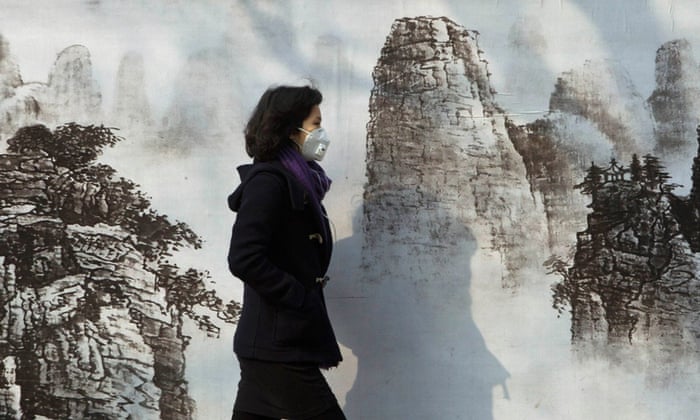
A woman wearing a facemask in Shanghai: photo by Aly Song / Reuters, 25 February 2014

A woman wearing a facemask in Shanghai: photo by Aly Song / Reuters, 25 February 2014

Tourists from mainland China take photos in front of a large outdoor banner in in Hong Kong showing what the city looks like on a clean-air day: photo by Alex Hofford / EPA, 25 February 2014

Tourists from mainland China take photos in front of a large outdoor banner in in Hong Kong showing what the city looks like on a clean-air day: photo by Alex Hofford / EPA, 25 February 2014
Mask
Behind the screen
propped up before the mirror
that is also a shield
against the questions that can't be asked
the planet of the self deceived
struggles to breathe
through the fine mesh fabric
of the no-answers mask An air
of misgiving
of the no-answers mask An air
of misgiving

A woman wears a mask as she walks by the National Stadium on a hazy day in Beijing: photo by Ng Han Guan /AP via The Guardian, 25 February 2014

A woman wears a mask as she walks by the National Stadium on a hazy day in Beijing: photo by Ng Han Guan /AP via The Guardian, 25 February 2014

A big screen flashes commercials on the exterior of an office building in Xi'an on 15 December 2012: photo by Mayi Wong / EPA via The Guardian, 25 February 2014
Back When
America Was So Damned Great You Could Hardly Catch a Breath
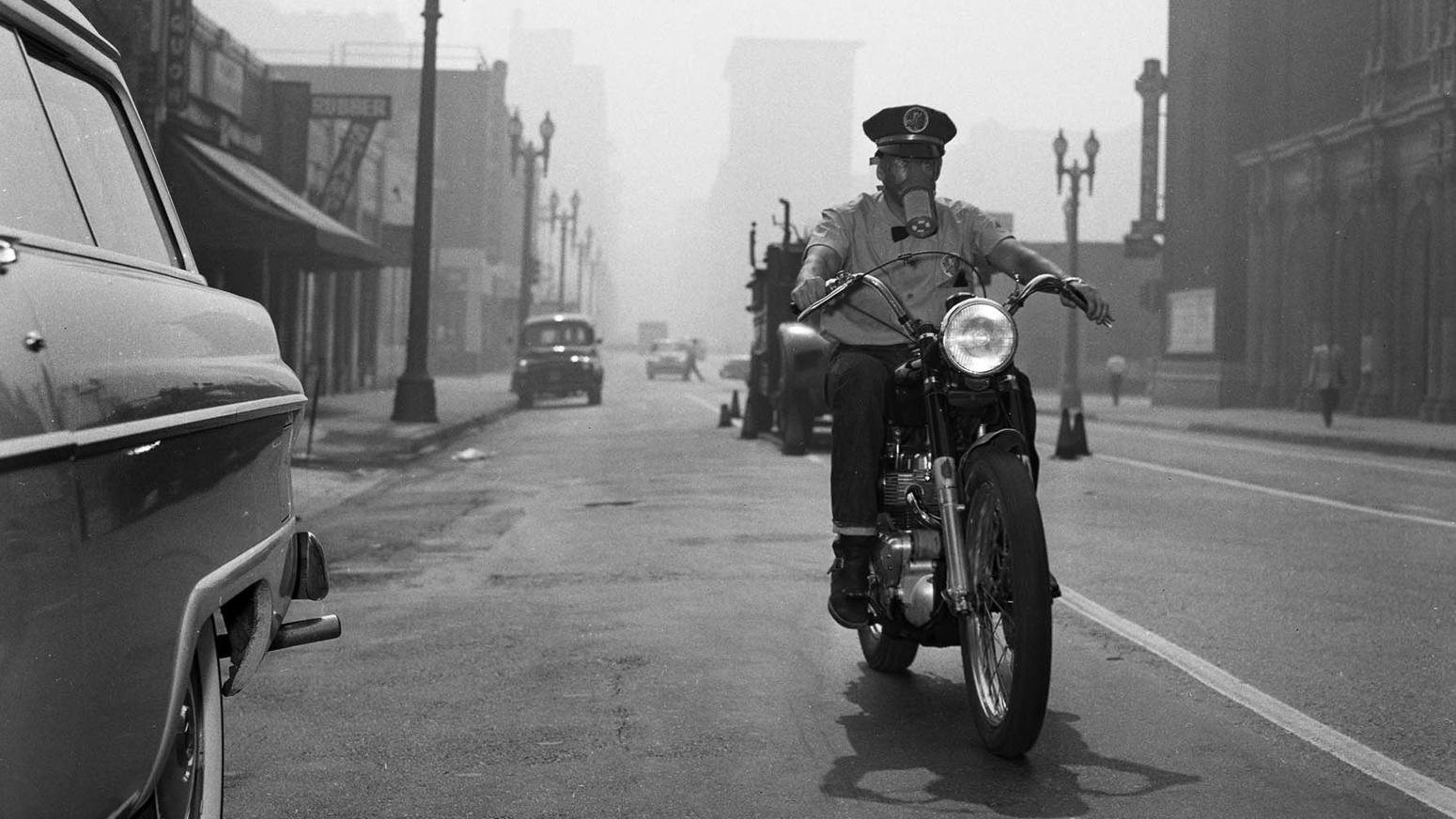
Sept.
14, 1955: Motorcycle messenger Frank Stone uses a gas mask while making
deliveries. This photo was published on Page One of the Sept. 15, 1955,
Los Angeles Times: image via Los Angeles Times Archive/UCLA, 2017

This was our air in 1990. State legislators are ready to go to war with Trump to stop this from happening again: image via Los Angeles Times, @latimes, 25 March 2017

Burning discarded automobile batteries, Houston, Texas: photo by Marc St. Gil for the US Environmental Protection Agency, July 1973

Clark Avenue and Clark Avenue Bridge, looking East from West 13th Street, are obscured by smoke from heavy industry, Cleveland, Ohio: photo by Frank J. Aleksandrowicz for the US Environmental Protection Agency, July 1973

The George Washington Bridge, New York City, in heavy smog. View toward the New Jersey side of the Hudson River: photo by Chester Higgins for the US Environmental Protection Agency, August 1973

Children play in yard of Ruston, Washington home, while Tacoma Smelter stack showers area with arsenic and lead residue: photo by Gene Daniels for the US Environmental Protection Agency, August 1972

The Atlas Chemical Company belches smoke across pasture land in foreground, Marshall, Texas. The plant Is referred to as "Old Darky" in the community because black soot from the plant covers everything near-by. One farmer claims he lost several cows due to soot and chemicals from Atlas: photo by Marc St. Gil for the US Environmental Protection Agency, June 1972

Smokestacks of chemical plant, Corpus Christi, Texas: photo by Marc St. Gil for the US Environmental Protection Agency, November 1972

Botaquito Lagoon, Carlsbad, California ,is one of the last few bodies of water of this type in the southern part of the state. It suffers from nearby freeways and developments as well as farm erosion and septic tank seepage. Some 84 percent of the state's residents live within 30 miles of the coast, and it has resulted in increased land use pressures. Coastal wetlands totaled about 125,000 acres in the early 1970's compared to some 381,000 acres in 1900: photo by Charles O'Rear for the US Environmental Protection Agency, June 1975
It
is only a few miles’ drive to the ocean, but before reaching it I
shall be nowhere. Hard to describe the impression of unreality, because
it is intangible; almost supernatural; something in the air. (The air .
. . Last night on the weather telecast the commentator, mentioning
electrical storms near Palm Springs and heavy smog in Los Angeles,
described the behavior of the air as ‘neurotic’. Of course. Like
everything else the air must be imported and displaced, like the water
driven along huge aqueducts from distant reservoirs, like the palm trees
tilting above the mortuary signs and laundromats along Sunset
Boulevard.) Nothing belongs. Nothing belongs except the desert and the
gruff eroded-looking mountains to the north. Because the earth is
desert, its surface always has that terrible dusty brilliance. Sometimes
it looks like the Riviera with a film of neglect over villas and
gardens, a veil of fine invisible sand drawn across tropical colours. It
is hard to be reminded of any single thing for long. These houses are
real because they exist and people use them for eating and sleeping and
making love, but they have no style of their own and look as if they've
been imported from half a dozen different countries. They are imitation
'French Provincial' or 'new' Regency or Tudor or Spanish hacienda or
Cape Cod, and except for a few crazy mansions seem to have sprung up
overnight. The first settlers will be arriving tomorrow from parts
unknown.
Gavin Lambert (1924-2005): from The Slide Area: Scenes of Hollywood Life, 1959
Gavin Lambert (1924-2005): from The Slide Area: Scenes of Hollywood Life, 1959

No dumping sign is a symptom of the population pressures along the coast of California off Mulholland Drive on the western edge of Los Angeles. The road winds through the Santa Monica Mountains which contain the last semi-wilderness in Los Angeles County and are being threatened by development. Some 84 percent of the state's residents live within 30 miles of the coast, and this concentration has resulted in increasing land use pressure.: photo by Charles O'Rear for the US Environmental Protection Agency, May 1975

Unfinished streets and utilities contrast with completed development (not shown) at Laguna Niguel. Work here was halted and other developments were restricted following state passage of the Coastal Zone Conservation Act in November, 1972. State and regional regulatory commissions must present a final report to the legislature by January, 1976, recommending passage of laws affecting future coastal development.: photo by Charles O'Rear for the US Environmental Protection Agency, May 1975

Sprinkler in chief [Women's March, Manhattan]: photo by Chris Farling, 22 January 2017
Frantically asking which way was safe when there was never meant to be a safe way

The Zaatari camp which shelters some 80,000 Syrian #Refugees on the Jordanian border with war-ravaged Syria. #AFP Photo @TomCoex: image via Aurelia Bailly @Aurelia Bailly, 28 March 2017

The Zaatari camp which shelters some 80,000 Syrian #Refugees on the Jordanian border with war-ravaged Syria. #AFP Photo @TomCoex: image via Aurelia Bailly @Aurelia Bailly, 28 March 2017

The Zaatari camp which shelters some 80,000 Syrian #Refugees on the Jordanian border with war-ravaged Syria. #AFP Photo @TomCoex: image via Aurelia Bailly @Aurelia Bailly, 28 March 2017

The Zaatari camp which shelters some 80,000 Syrian #Refugees on the Jordanian border with war-ravaged Syria. #AFP Photo @TomCoex: image via Aurelia Bailly @Aurelia Bailly, 28 March 2017

These retirees adopted Syrian refugees for a year. Then came "Month 13.": image via NYT Photo @nytphoto, 28 March 2017


The body of Rayees Ahmad, a suspected rebel commander, is covered with the Pakistani flag during his funeral south of Srinagar, India.: image via AP Images @AP_Images, 27 March 2017









Iranian fans wait for the start of Iran and China's World Cup qualifying soccer match at the Azadi Stadium in Tehran, Iran, Tuesday, March 28, 2017. Portraits of the late Iranian revolutionary founder Ayatollah Khomeini, left, and Supreme Leader Ayatollah Ali Khamenei placed at center. Iran won the match 1-0.: photo by AP, 28 March 2017
Real v. Glam: Alternative views of an earthly paradise, with potentially menacing photogenic willow
Lake Wanaka, Otago, NZ.: photo by Penelope Creeley, 26 March 2017
Lake Wanaka, Otago, NZ.: photo by Penelope Creeley, 26 March 2017
Loved your Robert and NZ post too, it’s always odd
to see such familiar places made glamorous. Above is a photo I took a
few days ago, of the same tree in your post, with the lake very low. Its
levels are controlled for hydroelectricity now, and it’s been a very
dry summer/late fall. There are a few trees like this one, in the area.
John, my brother, calls them fence post willows, as that’s what they
once were: a kind of willow called crack (really) that was used to make
fence posts. Once they came in contact with water they sprouted and grew
rampantly, hence the dense growth along many South Island streams.
Farmers also often ran fences right into lakes or rivers to prevent
stock getting around them at low water times. Of course willows are
regarded as a menace now, and usually sprayed with some horrid poison to
eradicate them. I am very jaundiced by the idea of NZ as a pure place
at the end of the world. The agricultural practices here are as bad as
any US agribiz, and there’s very little small farm practice to offset
the monopoly or provide any consumer choice, as there is in Maine.
-- P. C., 28 March 2017
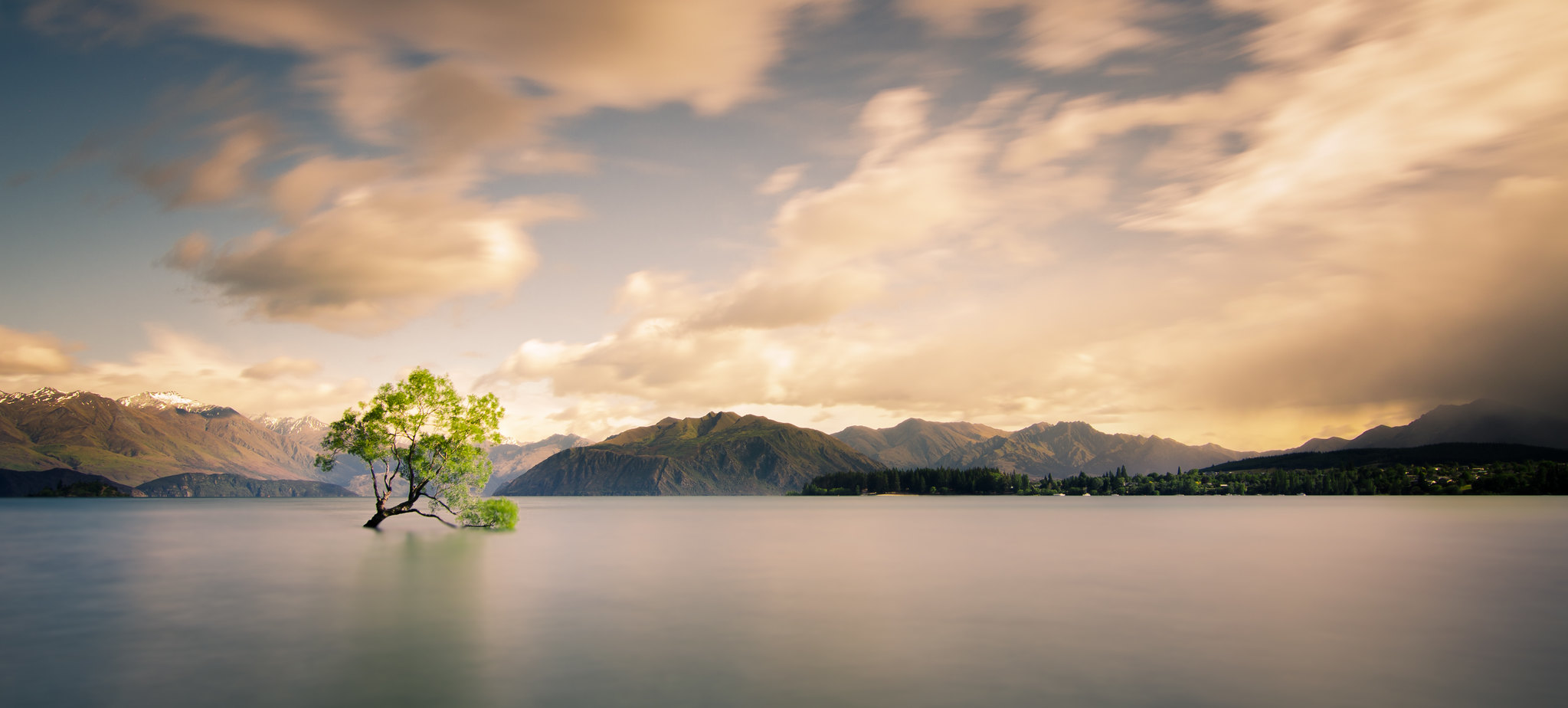
The lonely tree. Lake Wanaka, Otago, NZ.: photo by Tom Hall, 12 December 2015

Foxton Beach, NZ: photo by bobsan88, 11 February 2017

Ratana Church, Raetihi, NZ: photo by bobsan88, 26 March 2017

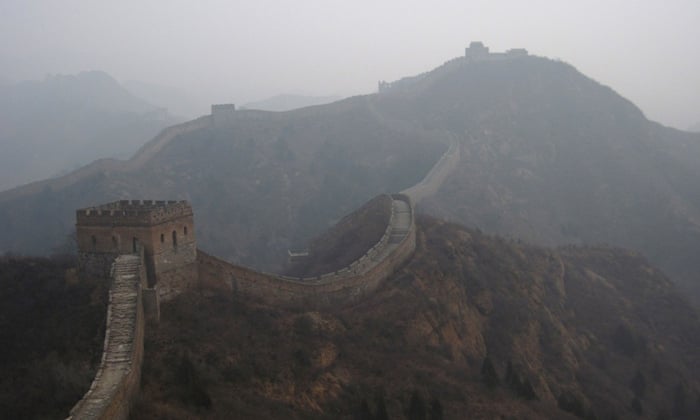







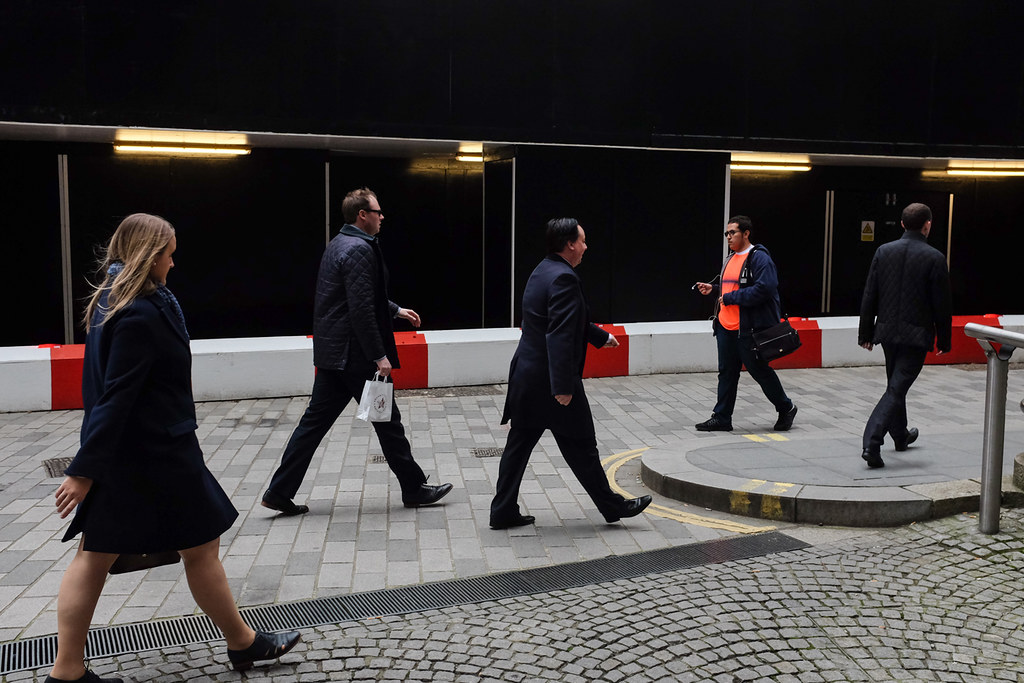

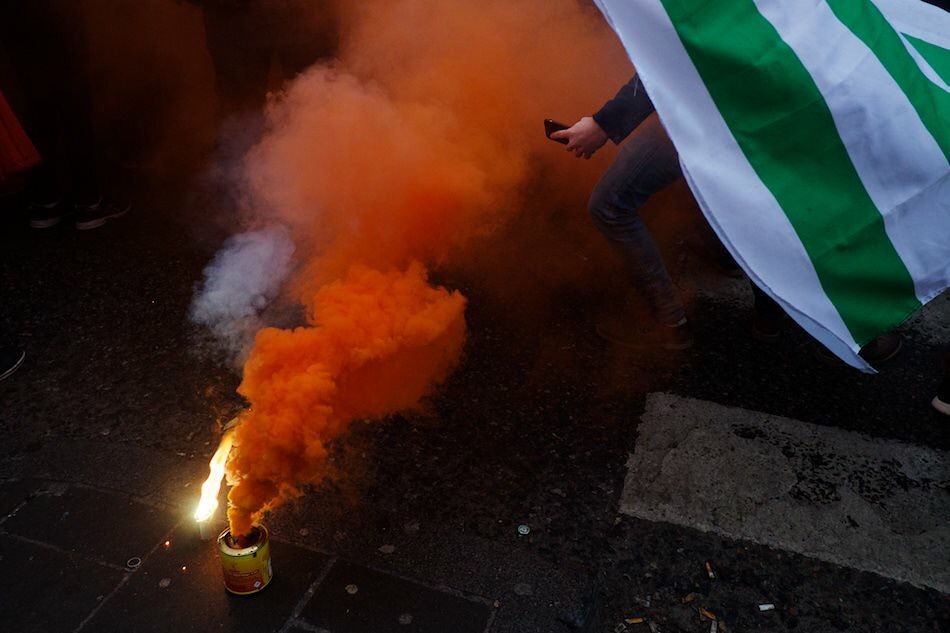

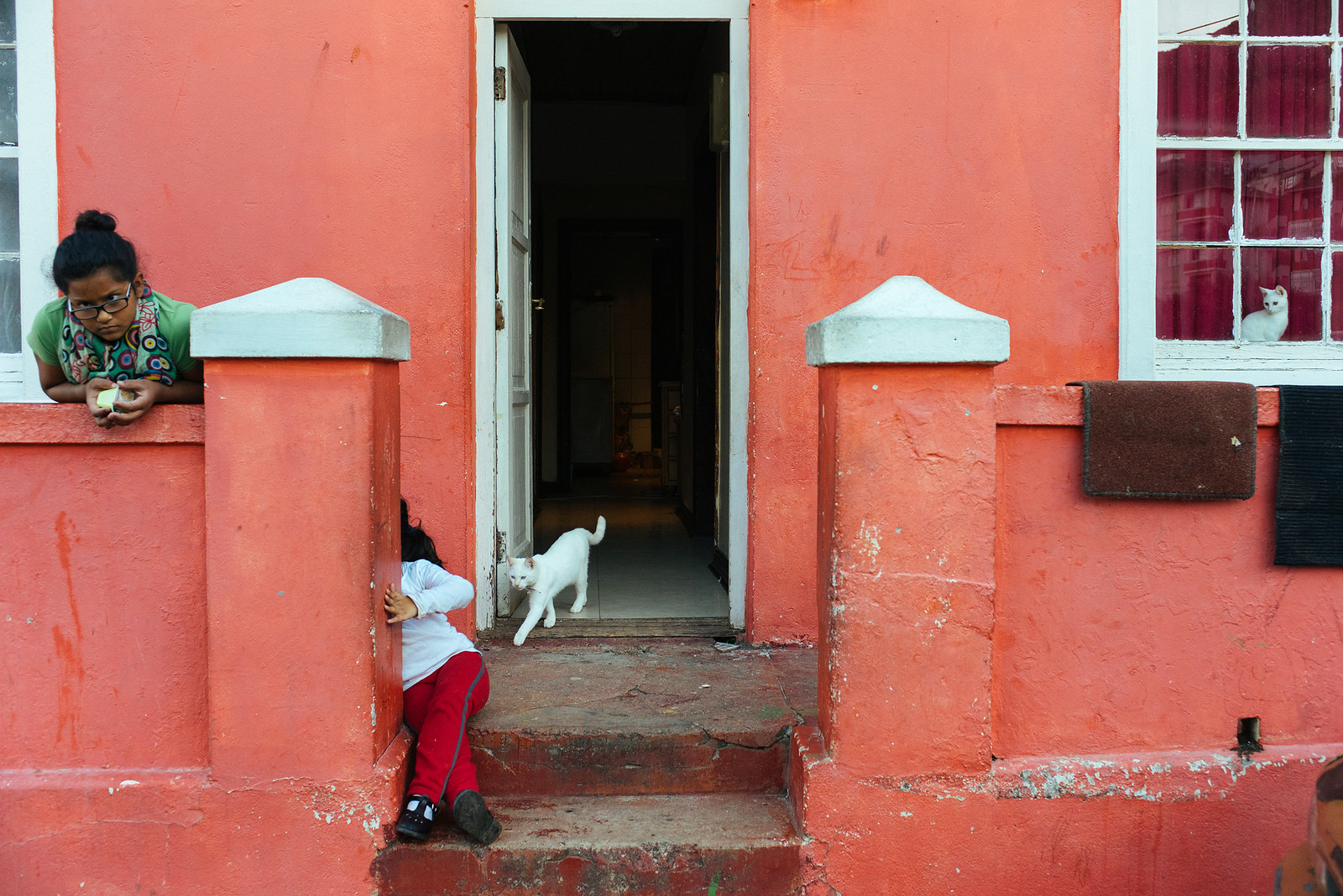


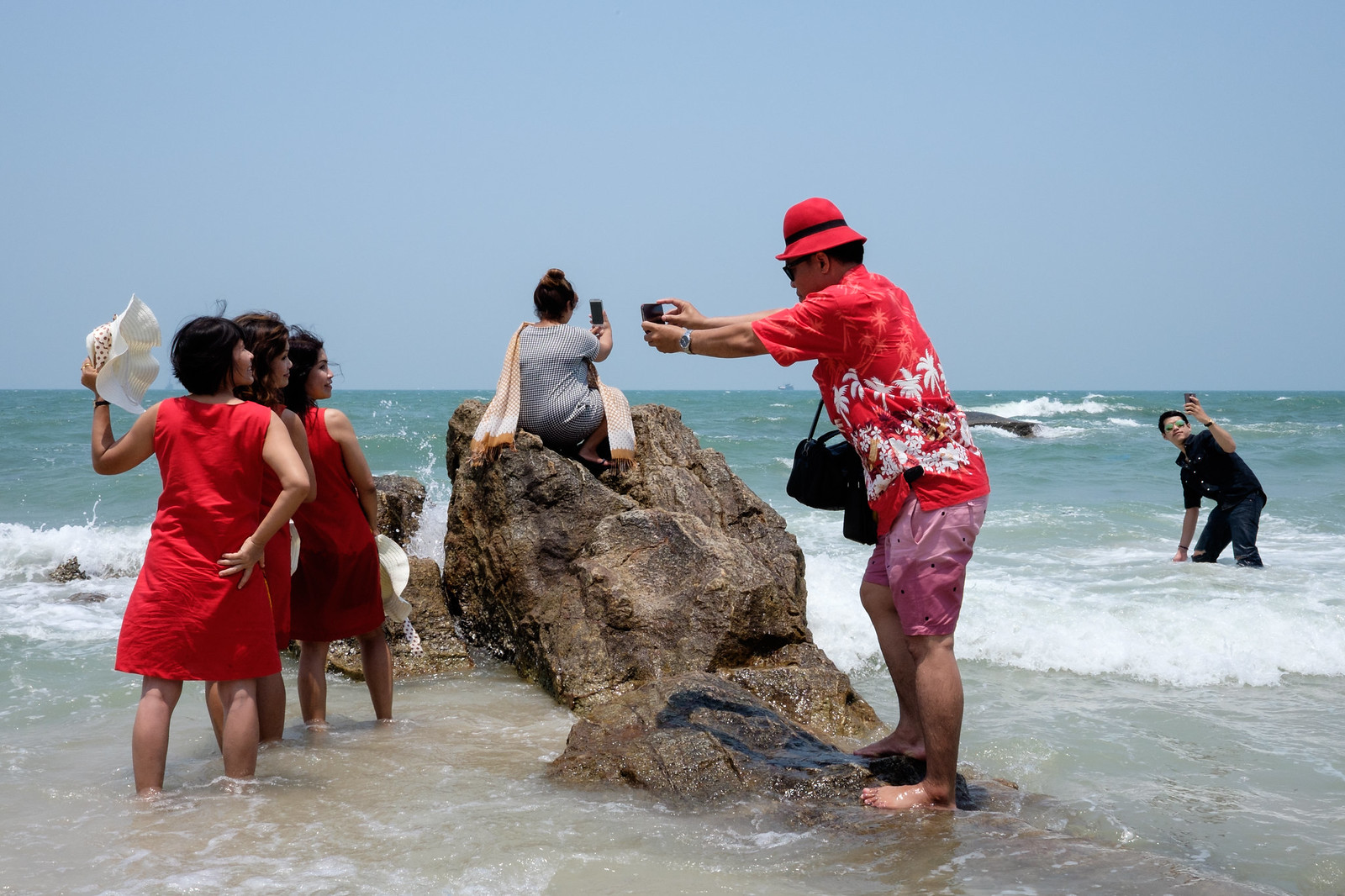



No comments:
Post a Comment